- College Prep
- Study Skills
- Career & Continuing Ed
- Online Learning
- Student Life
- Study Abroad
- Sponsorships
- Scholarships
- Student Group Shoutout
- Latest in Learning
- Success This Semester
- Educators Making an Impact
- Education News

6 Books About Education Inequality
We are a reader-supported education publication. When you buy through links on our site, we may earn an affiliate commission to help us keep providing content.
Racial achievement gaps in the U.S. are narrowing. However, the journey to total equality is slow and progress is unsteady. In fact, the standardized test scores between white and black students still amount to roughly two years of education. This disparity represents major gaps in educational opportunity and calls on educators, administrators and the education system as a whole to make a change. If you want to learn more about education inequality and what you can do to create equal opportunities for all of your students, add the following books about education inequality to your list of must-reads.
1. Teaching in the Flat World
Is high-stakes testing really the best way to assess students’ education and skills? This evaluation method is common within the U.S. However, it often leaves certain students behind. In Teaching in the Flat World, authors Linda Darling-Hammond and Robert Rothman appeal to the American education system to draw inspiration from other countries in which students receive more chances to succeed academically.
This book delves deep into the systems for preparing, developing and supporting teachers in countries like Singapore and Finland. Then, it gives teachers actionable ways to emulate these systems so that students of all backgrounds and abilities have equal opportunities for success.
2. Education Inequality: Closing the Gap
What might happen if, instead of researching the disadvantaged, the public focused its attention on what raises attainment among minorities, immigrants and low-income households? Author Feysia Demie envisions this alternate reality in her book Education Inequality: Closing the Gap.
This inspiring read offers an in-depth look at interventions in one poor inner-city school and how they’re offering equal opportunities for students to receive a high-quality education. Feysia’s research and analysis point to outstanding teachers, parents, a governing body and a community that all work together to effectively achieve this goal.
3. Other People’s Children: Cultural Conflict in the Classroom
Prejudice, stereotypes and assumptions breed ineffective education in the classroom. However, they’re quite common in today’s classrooms because teachers are poor cultural transmitters, according to author Lisa Delpit.
In her book, she explains how primarily white teachers educate other people’s children and perpetuate systematic racism and imbalance within the education system and beyond. Because these educators can’t communicate effectively, people of color and other minorities suffer academically. In light of recent events, every teacher could stand to read this radical analysis.
4. Savage Inequalities: Children in America’s Schools
Across the U.S., 53 school districts give a statistically significant amount less funding to high-poverty schools than low-poverty schools. In another 263 districts, funding has little to no connection to poverty levels, despite apparent disparities. Savage Inequalities addresses this funding gap and takes a closer look at how the public education system is failing today’s kids.
To write his analysis, author Jonathan Kozol spent two years touring the country , interviewing school staff and students. He argues that underfunded schools have higher dropout rates and that school districts should equalize funding in the name of achieving educational equity.
5. Between the World and Me
What is it like to inhabit a black body and live within it? How can our nation reckon with a history of slavery and segregation and free ourselves from this historical burden? In his book Between the World and Me, Ta-Nehisi Coates attempts to answer these questions and explain his own awakening to the truth about his place in the world.
Because the book is written as a letter to Ta-Nehisi’s 15-year-old son, it often focuses on youth and education. Because he believes that true knowledge will dispel the myths on which racism is built, he is a major proponent of study and learning. The more people understand where inherent injustice comes from, the more apt they’ll be to abolish it.
6. So Much Reform, So Little Change
In his book So Much Reform, So Little Change, Charles Payne explains why 30 years of reform has had little effect on urban public schools. At its heart, the text argues that most educational policies are disconnected from reality, especially in poor communities.
This difficult yet necessary read will likely upset teachers whom Charles has depicted as naive and part of the problem. However, instructors who are willing to be the change will take his words as a wake-up call. Instead of feeling like the victim or calling for further reform, they’ll take initiative and work to find better solutions starting with their own classroom.
Keeping an Open Mind
Reading about and experiencing education inequality can be a heart-wrenching experience. However, learning more about other people’s struggles will help to root out the inherent bias that exists at a subconscious level.
As you take in the words of these authors, try to keep an open mind and constantly reevaluate yourself. Are you doing all that you can to create equal opportunities for your students? How might you educate fellow teachers and administrators about systematic inequality and disparities within your own school system? As with anything, change starts with you. You just have to take that first step, and reading one of these books is a good place to start.
Search Classrooms.com
Browse by category.
- Educating 98
- Experience 106
- Higher Learning Highlights 11
- Learning 238
- Student Funding 32
Latest News

Automating Administrative Tasks in Education Institutions

How to Apply for Grants for College

How to Get Local Business Sponsorship for School Events

5 Major Issues in Education Today

Does Withdrawing From a Class Look Bad?

What Companies Do Sponsorships for Student Groups?
Keep up with the latest in learning, more to learn.

What Is the Future of IoT in Education?
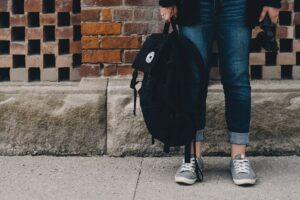
What Does Advocating for Students Mean as an Educator?

The Role of Big Data in Education

What You Need to Know About STEM MBA Programs

8 Books to Read if You Want to Make American Education Great Again
Amanda Kay Oaks
A native of Cincinnati, Ohio, Amanda Kay Oaks has a BFA in Creative Writing and Literature from The University of Evansville and is a current creative nonfiction MFA student at Chatham University. An AmeriCorps alum, online tutor, and literary journal editor, Amanda considers herself a professional wearer of many hats and isn't sure what she'll do if she ever actually has only one job at a time. When she isn't working, reading, writing, or pretending to be a practiced yogi, Amanda can most likely be found snuggled up on the couch with her cat, Artemis, and a plate of cookies. She tweets T.S. Eliot quotes a little too often and tries to keep up with her personal book blog, I Write Things . Twitter: @I_Write_Things
View All posts by Amanda Kay Oaks
One of the many issues that keeps popping up in American news is who should be our next Secretary of Education. This debate brings about questions of what’s next in the ever changing landscape of public education. Our education system seems to be in constant flux, but are the changes helping or hurting students?
If you want to be prepared to guide our children (and adult learners) to a better future, why not start with educating yourself about how our education system got this way–and whether or not it works.
There are a number of great books out there, but here are a few suggestions for where to start.
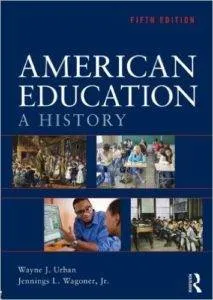
This book seems like a good starting point, as it details the history of American Education from pre-colonial days on (including a look at Native American education before colonization). It deals with major education movements in each time period, tracing how we got to where we are today.
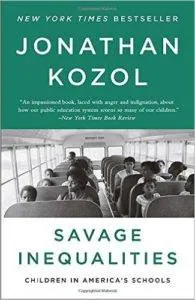
Savage Inequalities addresses the funding gap between schools in wealthy areas and those in poorer ones. To write this book on whether or not our education system really provides equal opportunity to every child, Kozul spent two years touring the country, interviewing teachers, principals, superintendents, and students.
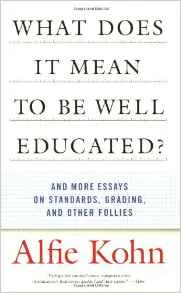
This book features a series of essays about our education system’s fixation on scores and grades. As standardized tests continue to be the standard on which both students and teachers are judged, what are we losing? What is the real goal of education–and are we still focusing on this as we try new and different systems to evaluate and score students?
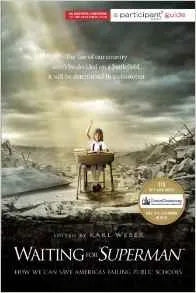
This book (and the documentary of the same name) draws on the knowledge of education reform experts to provide insight, suggestions, and resources to help the reader join the struggle to improve our schools.
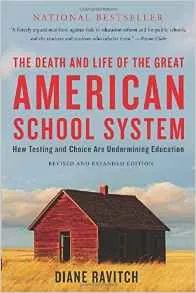
Ravitch is the former assistant secretary of education and a voice for the drive to create a national curriculum. Drawing on her experience, she re-examines previously held positions and makes a case for why we need education reform.
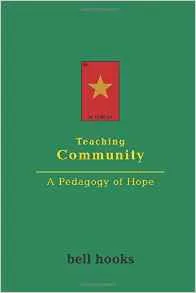
This book is part of a three book pedagogy trilogy that takes on issues of education and the issues inherent in the system. In this book, bell hooks tackles areas such as race, gender, class and nationality both in and beyond the classroom. She reminds us that education needs to be democratic, leaving space for all perspectives and all people to thrive.
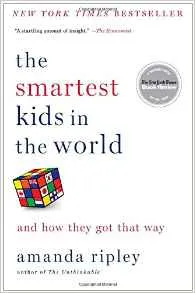
This book serves as a nice point for comparison, looking at education systems in other countries that approach education differently than America does. Ripley follows three Americans who live in three of these “smart” countries for a year–South Korea, Finland, and Poland.
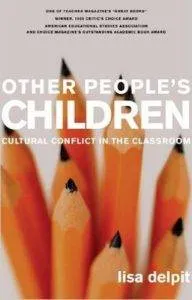
This book deals with the disparity between the number of children of color in the classroom and the number of teachers of color who instruct them. She discusses the teacher’s role as a “cultural transmitter” and examines the role of power dynamics and authority in the classroom.
You Might Also Like

MOVING SALE — Save 50% Off Select Books This Month

The Education Trap
Schools and the Remaking of Inequality in Boston
Cristina Viviana Groeger
Harvard University Press books are not shipped directly to India due to regional distribution arrangements. Buy from your local bookstore, Amazon.co.in, or Flipkart.com.
This book is not shipped directly to country due to regional distribution arrangements.
Pre-order for this book isn't available yet on our website.
This book is not yet available
Edit shipping location
Dropdown items
- Barnes and Noble
- Bookshop.org
- Waterstones
ISBN 9780674249110
Publication date: 03/09/2021
Request exam copy
Why—contrary to much expert and popular opinion—more education may not be the answer to skyrocketing inequality.
For generations, Americans have looked to education as the solution to economic disadvantage. Yet, although more people are earning degrees, the gap between rich and poor is widening. Cristina Groeger delves into the history of this seeming contradiction, explaining how education came to be seen as a panacea even as it paved the way for deepening inequality.
The Education Trap returns to the first decades of the twentieth century, when Americans were grappling with the unprecedented inequities of the Gilded Age. Groeger’s test case is the city of Boston, which spent heavily on public schools. She examines how workplaces came to depend on an army of white-collar staff, largely women and second-generation immigrants, trained in secondary schools. But Groeger finds that the shift to more educated labor had negative consequences—both intended and unintended—for many workers. Employers supported training in schools in order to undermine the influence of craft unions, and so shift workplace power toward management. And advanced educational credentials became a means of controlling access to high-paying professional and business jobs, concentrating power and wealth. Formal education thus became a central force in maintaining inequality.
The idea that more education should be the primary means of reducing inequality may be appealing to politicians and voters, but Groeger warns that it may be a dangerous policy trap. If we want a more equitable society, we should not just prescribe more time in the classroom, but fight for justice in the workplace.
Does education always bring more equality? Not necessarily: sometimes education is used to legitimize unfair inequality in pay and power and to promote a pseudomeritocratic and deeply inegalitarian ideology. By looking at early-twentieth-century Boston, this fascinating book teaches a lesson about today: a more equitable society requires a fight for justice, not only in education, but in the workplace and in the tax system. —Thomas Piketty, author of Capital in the Twenty-First Century
This is the best book about education that I have read in a long time. I urge you to read it… One of the most striking things about the book is its balanced strengths in both theoretical sweep and empirical evidence….Groeger’s study manages to make a compelling interpretation of how the American system of schooling has managed to expand educational opportunity while at the same time reinforcing social inequality, and she also backs it up with a vast array of persuasive data drawn from the Boston case. —David Labaree
Seeks to remind us that more hours spent in the classroom does not necessarily equal a brighter, more egalitarian future for all…The ‘trap’ in Groeger’s title refers to the unique and persistent tendency in the United States to focus on education rather than worker power as a panacea for social ills and economic inequality. —Megan Erickson, The Nation
An important read for anyone interested in the history of education and how it can improve our understanding of schooling and society today. It provides an enlightening read for teachers, teacher educators, researchers, and policymakers, particularly those interested in social justice, encouraging them to examine the society in which students are being educated. —Lisa Kenny, Educational Forum
Stunning…This richly researched, methodologically sophisticated, well-written study of schooling in Boston from the 1880s to the early 1940s offers eye-opening insights into the shifting pathways into the labor force. Much more than an impressive work of historical reconstruction, this book should serve as a cautionary tale for our own times. —Steven Mintz, Inside Higher Ed
Shows the checkered history of education as an anti-poverty tool. Perhaps most importantly, it helps educators and organizers think about the things that actually do reduce inequality: universal government programs and strong unions. —Mike Stivers, Jacobin
A powerful rejoinder to the argument that education alone can serve as the panacea and makes a powerful contribution to and connects the subfields of business, labor, and education history. It merits the widest possible readership. —Lily Geismer, Business History
Incisive…Groeger makes a persuasive case that education is not necessarily the ‘great equalizer’ it’s often touted to be. Policymakers, economists, and education reformers will want to take note. —Publishers Weekly
This extensive, insightful historical examination reveals how U.S. education has perpetuated social inequality rather than decreasing it. —Library Journal
Groeger argues…that the US higher-education ecology was designed to cement rather than to remediate privileges of birth. It’s a lively and fascinating account of occupational politics and entrepreneurial ambition, crafted with scholarly care and recounted lucidly. —Mitchell L. Stevens, Public Books
A cautionary tale for would-be reformers inclined to uncritically repeat bromides about egalitarian uplift through education…A work worthy of consideration for those with an interest in developing deep and nuanced understandings of the complex relationship between work, education, and society. —Eric Torres, Harvard Educational Review
At a time when increasing numbers of Americans are concerned about the legacies of systemic discrimination, The Education Trap is a timely reminder of the destructive and undemocratic impact of exclusionary educational elitism. —Rebecca S. Montgomery, American Nineteenth Century History
Offers a compelling analysis of how and why myths about merit and mobility through education were constructed…Most of all, it critiques the way in which social scientists and policymakers assert education as an answer to social inequality without attending to the larger dynamics of power that structure work and education. —Tracy Steffes, Journal of Interdisciplinary History
Groeger examines how Americans came to view education as a panacea for economic disparities…[A] work of rich research, crisp prose, and lively narrative. —Emily Y. Tran, Urban History
Challenging conventional wisdom, Cristina Groeger shows how increased educational opportunities can reinforce inequality when political and social elites deploy credentialism to generate new occupational hierarchies based on gender, race, ethnicity, class, and citizenship. Her probe of Boston a century ago uncovers the deeper historical roots of the ‘education trap.’ —Eileen Boris, author of Making the Woman Worker: Precarious Labor and the Fight for Global Standards, 1919–2019
Groeger challenges America’s central myth that education can substantially counteract social and economic inequality. This subtle, finely grained analysis of Boston schools and economic development from the Gilded Age to World War II offers a provocative rereading of social class, technological innovation, and racial and gender differentiation in the nation’s public and private classrooms. —Leon Fink, author of The Long Gilded Age: American Capitalism and the Lessons of a New World Order
This exquisite book forces us to question one of our most firmly held assumptions: that education is the pathway to equality. Through a closely told history of Boston, Groeger’s work compels us social scientists, historians, and the public to rethink our vision of how to achieve a more equitable society. —Shamus Khan, author of Privilege: The Making of an Adolescent Elite at St. Paul’s School
- 2020, Joint winner of the Thomas J. Wilson Prize
- 2022, Winner of the IPUMS Research Award
- Cristina Viviana Groeger is Assistant Professor of History at Lake Forest College. Her research has been funded by the National Academy of Education and the Spencer Foundation.
Book Details
- 6-1/8 x 9-1/4 inches
- Harvard University Press
Recommendations

The Intellectual Sword

The Other School Reformers

Testing Wars in the Public Schools

Patriotic Pluralism

Innocents Abroad
Sorry, there was an error adding the item to your shopping bag.
Expired session
Sorry, your session has expired. Please refresh your browser's tab.
Main navigation
An item has been added to the cart
Added to shopping bag
- Copy to clipboard
Set your location
It looks like you're in . Would you like to update your location?
Unavailable
Harvard University Press titles are not shipped directly to India due to local distribution arrangements.
Unavailable in country .
Shopping Bag
Your shopping bag is currently empty. Add items to your shopping bag, to complete check out.
You are using an outdated browser. Upgrade your browser today or install Google Chrome Frame to better experience this site.
- Professional Learning
Our Approach
- Get to Know Us
- Let’s Connect
Professional Learning (PD)
- Professional Learning Services
- Impact Teams-PLCs
- Diversity-Equity-Inclusion
- Learner-Centered Leadership
- School Climate
- Learner-Centered Assessment
- Learner-Centered Instruction
- Learner-Centered Curriculum
PD Resources
- Continuing Education Credits
- Unpacking for Clarity
- Leadership Coaching
Let's plan your PD
" * " indicates required fields
- Overview of our Approach
- Our Evidence Base
Thoughts and Actions
- Case Studies
Go Ahead, Ask!
Meet our team.
- Company Beliefs
- Mimi & Todd Press
- Become a Consultant
- Past Events
Sign Up for our Newsletter
Join us in utah on oct 10, social media.
IncludED - Equity & Inclusion / Professional Learning Communities / School Climate
The Core Collaborative November 29, 2022 3 min read
19 Essential Books to Understand Race and Equity in School
By isaiah mcgee.
Many educators have been asking what can I read to better understand race, racism, and its impact on schools and the classroom. In honor of Juneteenth, I compiled a list of 19 essential books that can help educators not only better understand the elusive, pervasive, and persistence impact of race on schools, but also provide them with skills to challenge and mitigate its influence and provide marginalized students, especially Black students, the best learning environment and experience.

- So You Want to Talk About Race Ijeoma Oluo Gives honest, clear, and constructive, and conversations about race and racism, how to deal with racial prejudices and biases, and how they infect almost every aspect of American life.
- Between the World and Me Ta-Nehisi Coates From a personalized viewpoint, Coates confronts the notion of race in America how it was systematically constructed and shaped American history which includes the subjugation of Black people.
- Why Are All the Black Kids Sitting Together in the Cafeteria? Beverly Tatum Uses research and psychological theory to explain the development of racial identity and the impact that has on racism and belonging.

- Racism Without Racists Eduardo Bonilla-Silva Documents how, beneath our contemporary conversation about race that often leads to “colorblind” philosophy on race, there persist a litany of arguments, phrases, and stories used to systematize and justify racial inequalities.
- How to be an Antiracist Ibram X. Kendi Kendi uses history, science, and ethics to describe different forms of racism and how it becomes structural; how people are harmed by this structure, and working to undo racism and its component policies in order to build an equitable society.
- White Fragility: Why It’s So Hard for White People to Talk About Race Robin DiAngelo Explores the counterproductive reactions White people often have when their assumptions about race are challenged, and how these reactions maintain racial inequality.

- Culture and Power in the Classroom Antonia Darder This book makes the intellectual argument on culture is situated in the classroom experience and how it informs everything we do from curriculum, pedagogy, organization, and daily (sometimes hidden) practices intersect with the power dynamic that exists in schools.
- Other People’s Children Lisa Delpit Explains how many of the academic problems attributed to children of color are often the result of miscommunication that stems from the struggle with the imbalance of power.
- Whistling Vivaldi Claude Steele Sifts through empirical studies to explain the concept of stereotype threat which suggests that regardless of our social power or positionality, identity-based stereotypes that have been internalized can cripple performance and potential.

- We Can’t Teach What We Don’t Know Gary Howard Establishes a critically conscious framework for White, middle-class teachers to become highly effective, culturally relevant, and responsive educators, especially those in the most poorly resourced schools.
- Start Where You Are, But Don’t Stay There Richard Milner Provides insights and skills for successfully educating diverse student bodies. The book centers on case studies that exemplify the challenges, pitfalls, and opportunities facing teachers in diverse classrooms.
- Culturally Proficient Instruction Kikanza Nuri-Robins, Randall Lindsey, Deloras Lindsey, Raymond Terrell This book provides tools, resources, and vignettes to frame how educators illustrate what can transform our educational practice to meet the needs of all kids.

- The Dreamkeepers Gloria Ladson-Billings Provides an explanation of how culturally relevant teaching works and that it is not a matter of race, gender, or teaching style. What matters most is a teacher’s efforts to work with the unique strengths a child brings to the classroom.
- Culturally Responsive Teaching and the Brain Zaretta Hammond Offers a framework for optimizing student engagement and uses neuroscience research to offer how our cultures program the brain to process data and affect learning relationships.
- The Guide for White Women Who Teach Black Boys Eddie Moore Jr. Ali Michael, Marguerite Penick-Parks Employs poignant personal stories, current research, and specific activities as an instructional guide to the largest demographic of educators teaching one of the most marginalized populations of students.
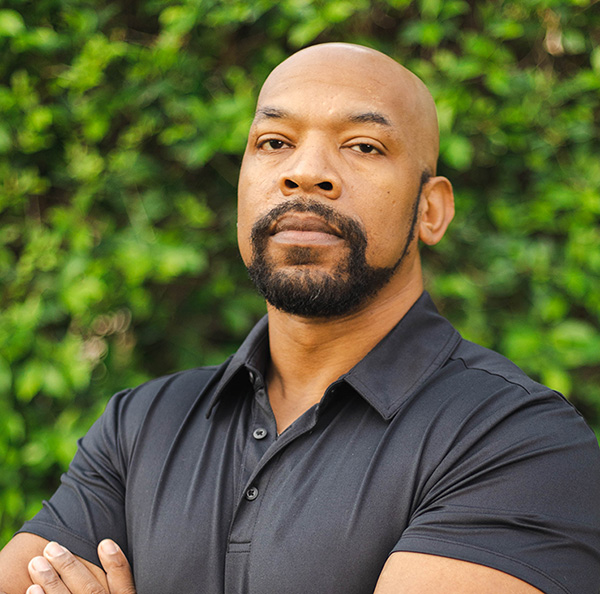
Meet the Author
Related blogs, the heart of learning: connection and relationship.
By The Core Collaborative Learning Lab August 6, 2024
Youth Blog | Celebrating Connection: The Power of Friendships and Relationships
Celebrating disability pride month.
By The Core Collaborative Learning Lab July 8, 2024
Let's Connect
This form is on the "Let's Connect" Section on the Homepage

Inequality in Education
Comparative and International Perspectives
- © 2009
- Donald B. Holsinger ,
- W. James Jacob ORCID: https://orcid.org/0000-0002-5205-5463
You can also search for this editor in PubMed Google Scholar
- Editors are well-connected as can be observed from the list of highly renowned scholars contributing to this volume; both editors have lengthy publication records
- Focus of the book is timely and will significantly add to the comparative, international, and development education literature
- Its topic: inequality in education represents the importance of social justice issues in international education
Part of the book series: CERC Studies in Comparative Education (CERC, volume 24)
152k Accesses
75 Citations
24 Altmetric
This is a preview of subscription content, log in via an institution to check access.
Access this book
Subscribe and save.
- Get 10 units per month
- Download Article/Chapter or eBook
- 1 Unit = 1 Article or 1 Chapter
- Cancel anytime
- Available as PDF
- Read on any device
- Instant download
- Own it forever
- Durable hardcover edition
- Dispatched in 3 to 5 business days
- Free shipping worldwide - see info
Tax calculation will be finalised at checkout
Other ways to access
Licence this eBook for your library
Institutional subscriptions
About this book
Similar content being viewed by others.

Introduction to Policy and Inequality in Education

Cross-National Trends in Addressing Socioeconomic Inequality in Education

Introduction to the Handbook (Second Edition): Comparative Sociological Perspectives on Racial and Ethnic Inequalities in Education
- education inequality
- education policy
- higher education
- international development education
- social justice
Table of contents (24 chapters)
Front matter, introduction, inequality in education: a critical analysis.
- W. James Jacob, Donald B. Holsinger
Conceptual Issues
Distribution of opportunities key to development.
- Vinod Thomas, Wang Yan
Does Capitalism Inevitably Increase Inequality?
- Dave Hill, Nigel M. Greaves, Alpesh Maisuria
Education and Inequality in the Developing World
- Wu Kin Bing
Gender Inequalities in Educational Participation
- Karen E. Hyer, Bonnie Ballif-Spanvill, Susan J. Peters, Yodit Solomon, Heather Thomas, Carol Ward
Inequalities in Education for People with Disabilities
- Susan J. Peters
Language and Democracy in Africa
- Birgit Brock-Utne
Reconstructing Access in the Cambodian Education System
- John M. Collins
Higher Education in China: Access, Equity and Equality
- John N. Hawkins, W. James Jacob, Li Wenli
Using Enrollment and Attainment in Formal Education to Understand the Case of India
- Mary Ann Maslak
Education Inequality in the Republic of Korea: Measurement and Causes
- Matthew E. Burt, Park Namgi
Access and Equity: Who are the Students at Taiwan's Top Universities?
- Hung Chih-Cheng, Cheng Sheng Yao
Provincial, Ethnic, and Gender Disparities in Education: A Descriptive Study of Vietnam
- W. Joshua Rew
Different Paths, Similar Effects: Persistent Inequalities and Their Sources in European Higher Education
- Cécile Deer
Religious Education and Islam in Europe
- Holger Daun
Middle East & North Africa
Social inequalities, educational attainment, and teachers in egypt.
- Nagwa M. Megahed, Mark B. Ginsburg
Inequalities in Iranian Education: Representations of Gender, Socioeconomic Status, Ethnic Diversity, and Religious Diversity in School Textbooks and Curricula
- Omid Kheiltash, Val D. Rust
North & South America
Mexico: evolution of education and inequality in the last two decades.
- Gladys Lopez-Acevedo
Issues of Difference Contributing to US Education Inequality
- Eric Johnson, Tyrone C. Howard
From the reviews:
“The work, edited by Donald B. Holsinger and W. James Jacob, presents striking global evidence of a certain closing of the inequality gap in numerous countries. … it has been carried out clearly and offers a practical order for the presentation of evidence and discussion. … offer valuable contributions to the subject of inequality in education. … Holsinger and Jacob’s volume provides particularly helpful information about trends and possible remedies.” (Marcelo Caruso, Comparative Education Review, August, 2010)
“Inequality in Education: Comparative and International Perspectives is a strong contribution to the field of comparative education because it offers conclusions and recommendations to the problems of inequality and inequity while at the same time strongly maintaining the importance of the fundamentals and cultures of each country studied. … welcome addition to the repertoire of comparative education scholars. … an exciting and creative attempt to reflect upon current policies that lie at the heart of building up our understanding of equity and equality in education.” (Ali Ait Si Mhamed, Internationale Zeitschrift für Erziehungswissenschaft, Vol. 56 (4), 2010)
Education and Social Inequality in the Global Culture
Inequality in Education: Comparative and International Perspectives
"For critical observers, the persistent issue of social inequality in the field of education and schooling represents one of the greatest sources of frustration. Whereas issues related to pedagogy, teaching cultures, and school expansion achieve some improvement in many settings, inequality based on race, gender, income, religion, and culture in schools is still blatant in the field of education. The repeated diagnosis of these inequalities in scholarly work evokes adamant opposition of the privileged (and countless), mostly unfruitful attempts to overcome (or at least to mitigate) its most severe manifestations. On the whole, the general impression is that after decades of compensatory measures and a fair number of pro-poor and pro-women initiatives, the educational gap is not shrinking. Research on inequality in education remains an issue of undiminished significance. Ambitious theoretical drafts for a deeper understanding of the production,logic, and possible remedies for social inequality in education have been advanced from very different perspectives in the last decades. A wide range of factors have been identified as being responsible for the persistence of inequality in education.
Yet beyond all details regarding the particular configurations of inequality in local settings,a diffuse view of the structural character of inequality in capitalist societies—and also in communist societies, as set forth by Pierre Bourdieu 40 years ago—prevails. Fueled by resignation, a new realism in the social sciences suggests that inequality is something we would be better off learning to deal with rather than trying to overcome.
Faced with these low expectations, two recently edited books convey very different messages regarding the persistence of inequality in an international and global perspective. The volume edited by Joseph Zajda, Karen Biraimah, and William Gaudelli offers 11 chapters that deal with the issue extremely critically. The book aims at discussing the factors determining social inequality in education in the context of global culture. However, the bulk of research presented in the volume addresses varying national situations. Only two chapters refer to world regions, such as central and eastern Europe and the Islamic nation-states; only one contribution works with data from the Program for International Student Assessment and the Trends in International Mathematics and Science Study and could be characterized as having a more global perspective. The works edited in the volume criticize the persistence of old inequalities and the emergence of new ones in multicultural settings.
The second volume, however, contains some good news about inequalities in
education. The work, edited by Donald B. Holsinger and W. James Jacob, presents striking global evidence of a certain closing of the inequality gap in numerous countries. Perhaps because of the close relationships of many of the authors to international funding donors, this volume is ablend of critical, even radical, critique and a search for promising policy strategies. The 24 contributions also address conditions in several countries, whereas other contributions focus on world regions. Probably the only genuine global contribution is the analysis by Vinod Thomas and Yan Wang, who use a huge data set to follow the development of some indicators of inequality in 140 countries between 1960 and 2000. The editors have chosen different strategies for organizing the two volumes. Holsinger and Jacob have ordered the contributions according to world regions, reserving the first section for conceptual issues. Although the approach is certainly conventional, it has been carried out clearly and offers a practical order for the presentation of evidence and discussion. Their introduction is a substantive piece
of scholarship, in which definitions of equality and equity, analytical trends concerning the concept, and different measurements of educational inequality are concisely outlined. An unexpected plea by the editors for loyalty to and admiration for the World Bank does not diminish the value of the balanced arguments. These include a good and brief review of the literature on the subject. In view of this achievement, the editing done by Zajda, Biraimah, and Gaudelli is of inferior quality. In a book addressing global culture as the crucial environment for the analysis of local inequalities, the treatment of the leading category of globalization is somewhat unfruitful. The specific features of a culture that has become global are completely absent; only some salient features of the process of globalization are briefly addressed. The main analytical lines chosen by the editors forthe presentation and ordering of the contributions—hegemony, equity, and cultural capital—are undoubtedly significant themes. Yet their reluctance to advance a comprehensive approach to the promising concept of global culture and its dimensions is apparent. In addition, poor editing and layout problems reinforce the impression that a sparse amount of editing has been done. Despite these critical comments, the volume contains some highlights regarding research on inequalities in education. The discussions by Diane M. Hoffman and Guoping Zhao of a pervading Western individualism in Chinese childhood ideologies clearly refer to the tensions between the global and the local. Caroline E. Parker’s measuring of inequities in different urban settings in Nicaragua presents
unexpected evidence about school attendance and dropout rates. Kara Janigan’s work on female students in Eritrea describes strategies young women in a rural region of the country have developed to overcome the structural disadvantages they face. Very promising analyses, like those by Mary Holbrock about the Mayan revival in Guatemala or by Nagwa M. Megahed on Egyptian secondary teachers facing a reform alleviating the effects of school tracking, could have been more substantial and included broader data sets and more thorough theoretical perspectives.
Other contributions are rather disappointing because of the very superficial
discussion of their interesting findings. The work presented by Gillian
Hampden-Thompson, Lina Guzman, and Laura Lippman on evidence related to
the theoretical assumptions of the effects of cultural capital on students’ performance and skills is of utmostsignificance. Their approach is fruitful and yet, at the same time, frustrating. It is fruitful because they show that the assumed direct relationship between cultural capital and school performance and literacy is not unequivocal. It is also frustrating because the findings tend to confirm the thesis advanced by Bourdieu on social reproduction that underlies the more pessimistic diagnosis regarding the power of education in alleviating social inequalities. It is exactly at the intersection of huge data sets and theoretical conceptual work where future research on inequalities could make significant advances. In contrast, good news stands out in Holsinger and Jacob’s volume. The alreadymentioned article by Thomas and Wang shows a quite consistent decrease in inequality when taking into consideration some indicators like the gender and urban/rural gap as well as attendance and completion rates for elementary/primary schools. They work with an old measurement of inequality, the Gini coefficient, which was developed at the beginning of the twentieth century and widely used
for the measurement of income inequality. Thomas and Wang, along with other contributions in the volume, apply it now to the field of education. Using this and other indicators, the evolution of Korean education presented by Matthew E. Burt and Namgi Park shows the striking advancement of educational attainment and educational equality in this country. Luis Crouch, Martin Gustafsson, and Pablo Lavado provide a comparison between Peru and South Africa. In these countries, a narrowing of the inequality gap, measured by Gini coefficients and other indicators, shows consistent improvement.
Holsinger andJacob’s collection exceeds the quantitative approach of these
contributions and also focuses on the varying forms of inequality and on theoretical approaches related to almost forgotten big theories. This applies particularly to David Hill, Nigel M. Greaves, and Alpesh Maisuria’s essay with the suggestive title “Does Capitalism Inevitably Increase Inequality?” Their discussion also includes the results of empirical work and does not confine itself to a renewed exegesis of Marx. The postcolonial perspective taken by Birgit Brock-Utne in her discussion of the implications of English as a language of instruction in some African countries also illuminates new emerging forms of inequality due to the impact of global forces. Several chapters present additional relevant evidence about measuring inequalities,
while sometimes addressing the subject of functioning compensatory
policies. Beyond content issues, the professional background of many authors as consultants and advisors seems to have determined a style of presenting evidence and discussing it, which is sometimes highly uniform and repetitive. Well-written discussions also need good textual performance, not only good evidence.
On the whole, these two volumes offer valuable contributions to the subject
of inequality in education. New paths of measuring, new forms of inequality, and new policy strategies are addressed differently in both collections. Holsinger and Jacob’s volume provides particularly helpful information about trends and possible remedies. The tension between in-depth studies and more global perspectives is unavoidable, and, in this respect, it would be desirable to have a more reflectiveattitude by some authors about the reach, significance, and weaknesses of the data presented and the theses advanced. Highly popular simplifications about quantitative research as being solely the long arm of neoliberal tendencies are sharply challenged by many of these contributions. After all, solid quantitative research has also set forth pertinent evidence about the limited benefits, if any, of privatization,vouchers, and charter schools.In spite of the current crisis caused by untamed greed and organized irresponsibility,capitalism will not abdicate in the near future. We will have to face the issue of inequality in education under capitalist conditions for a long time.Interesting findings about school systems guaranteeing high performance for all children, such as those in Cuba, do not provide us with a transferable model of educational equality and equity. In this sense, differentiated diagnoses on the persistent issue of inequality and a critical assessment of the policies addressing it are still needed. This kind of work will be crucial for comparative education well after the dust of the finance crisis settles."
MARCELO CARUSO
University of Mu¨nster
Bibliographic Information
Book Title : Inequality in Education
Book Subtitle : Comparative and International Perspectives
Editors : Donald B. Holsinger, W. James Jacob
Series Title : CERC Studies in Comparative Education
DOI : https://doi.org/10.1007/978-90-481-2652-1
Publisher : Springer Dordrecht
eBook Packages : Humanities, Social Sciences and Law , Education (R0)
Copyright Information : Springer Science+Business Media B.V. 2009
Hardcover ISBN : 978-90-481-2651-4 Published: 23 June 2009
eBook ISBN : 978-90-481-2652-1 Published: 29 May 2009
Series ISSN : 1573-6040
Series E-ISSN : 2543-022X
Edition Number : 1
Number of Pages : XXVI, 584
Topics : International and Comparative Education , Educational Policy and Politics , Sociology of Education , Higher Education , Development Economics
- Publish with us
Policies and ethics
- Find a journal
- Track your research

Hemingway's Books and Records
Discover Best Education Inequality Books: 20 Key Titles, 2024 Updated
Are you passionate about addressing education inequality and seeking to deepen your understanding of this critical issue? Look no further than these 20 essential books on education inequality. From thought-provoking analyses to inspiring personal narratives, these books offer invaluable insights into the complexities of educational inequity. Whether you’re an educator, student, or advocate, these books will challenge and enlighten you as you navigate the complexities of education inequality.
- 1 20 Best Books About Education Inequality
- 2 The Shame of the Nation: The Restoration of Apartheid Schooling in America
- 3 The Color of Law: A Forgotten History of How Our Government Segregated America
- 4 Unequal Childhoods: Class, Race, and Family Life
- 5 The Testing Charade: Pretending to Make Schools Better
- 6 The Death and Life of the Great American School System: How Testing and Choice Are Undermining Education
- 7 The New Jim Crow: Mass Incarceration in the Age of Colorblindness
- 8 The Price of Inequality: How Today’s Divided Society Endangers Our Future
- 9 The End of Average: How We Succeed in a World That Values Sameness
- 10 The Teacher Wars: A History of America’s Most Embattled Profession
- 11 The Privileged Poor: How Elite Colleges Are Failing Disadvantaged Students
- 12 The Beautiful Struggle: A Father, Two Sons, and an Unlikely Road to Manhood
- 13 The Trouble with Black Boys: And Other Reflections on Race, Equity, and the Future of Public Education
- 14 The Dreamkeepers: Successful Teachers of African American Children
- 15 The Global Achievement Gap: Why Even Our Best Schools Don’t Teach the New Survival Skills Our Children Need—and What We Can Do About It
- 16 The Children in Room E4: American Education on Trial
- 17 The Other Wes Moore: One Name, Two Fates
- 18 The Miseducation of the Negro
- 19 The School-to-Prison Pipeline: Structuring Legal Reform
- 20 Savage Inequalities: Children in America’s Schools
- 21 No Shortcuts: Organizing for Power in the New Gilded Age
- 22 Conclusion
20 Best Books About Education Inequality

See Best Deals
The Shame of the Nation: The Restoration of Apartheid Schooling in America
By jonathan kozol.
The Shame of the Nation: The Restoration of Apartheid Schooling in America by Jonathan Kozol is a powerful and eye-opening book on education inequality in the United States. Kozol delves into the systemic segregation and unequal education opportunities faced by students of color in America, drawing attention to the stark disparities in resources, funding, and academic support between predominantly white and minority schools. Through compelling narratives and thorough research, Kozol uncovers the harsh realities of apartheid schooling and the detrimental impact it has on the future of these students. The book offers a critical analysis of the educational system and challenges readers to confront the deep-rooted issues of inequality and discrimination in our schools. This is a must-read for anyone passionate about addressing the pervasive issue of education inequality in America.

The Color of Law: A Forgotten History of How Our Government Segregated America
By richard rothstein.
The Color of Law: A Forgotten History of How Our Government Segregated America by Richard Rothstein is a groundbreaking book on education inequality that delves into the systemic segregation that has shaped American cities. Rothstein meticulously examines how government policies, such as redlining and discriminatory housing practices, have perpetuated racial and economic disparities in access to quality education and resources. Through extensive research and compelling narratives, Rothstein exposes the deliberate actions taken by government institutions to enforce segregation, ultimately leading to the entrenched inequality we see today. This eye-opening book about education inequality challenges readers to confront the lasting consequences of discriminatory policies and to rethink the narrative of individual responsibility in the face of systemic injustices. The Color of Law is an essential read for anyone seeking to understand the root causes of education inequality and the ongoing impact of government-sponsored segregation.
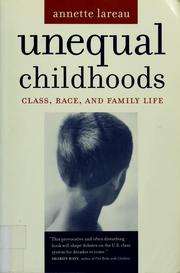
Unequal Childhoods: Class, Race, and Family Life
By annette lareau.
Unequal Childhoods: Class, Race, and Family Life by Annette Lareau is a groundbreaking book that delves into the complex dynamics of class, race, and family life in relation to education inequality. Lareau’s extensive research provides a compelling analysis of how social class and race impact children’s upbringing, shaping their educational opportunities and outcomes. Through in-depth interviews and observations, she uncovers the disparities in parenting styles, extracurricular activities, and access to resources among families from different socioeconomic backgrounds. This thought-provoking book offers valuable insights into the ways in which inequality is perpetuated within the education system, shedding light on the challenges faced by marginalized communities. Unequal Childhoods is a must-read for anyone seeking a deeper understanding of the pervasive issues surrounding education inequality.


The Testing Charade: Pretending to Make Schools Better
By daniel koretz.
The Testing Charade: Pretending to Make Schools Better by Daniel Koretz is a thought-provoking book on education inequality that challenges the widespread use of standardized testing as a measure of student achievement. Koretz argues that the focus on testing has led to a “charade” in which schools and educators are pressured to prioritize test scores over meaningful learning, ultimately widening the gap between privileged and underprivileged students. Through compelling analysis and real-world examples, Koretz exposes the detrimental effects of high-stakes testing on educational equity and offers alternative approaches to assess student progress. This eye-opening book about education inequality raises important questions about the true purpose of testing in education and its impact on students from diverse backgrounds. Koretz’s insightful examination of the testing culture will undoubtedly spark discussions and reflections among educators, policymakers, and anyone concerned with creating a more equitable education system.
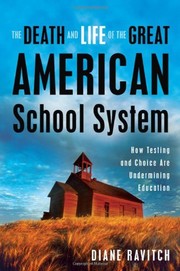
The Death and Life of the Great American School System: How Testing and Choice Are Undermining Education
By diane ravitch.
The Death and Life of the Great American School System by Diane Ravitch is a thought-provoking book on education inequality. Ravitch, a former advocate of testing and school choice, critiques these policies and argues that they are undermining the American education system. Drawing on extensive research and her own experiences, she discusses the negative impacts of standardized testing and the promotion of charter schools on students, teachers, and communities. Ravitch presents a compelling case for the importance of a strong public education system and the need to address the root causes of education inequality. Her book is a must-read for anyone interested in understanding the complex issues surrounding education inequality and the potential solutions to improve the American school system.

The New Jim Crow: Mass Incarceration in the Age of Colorblindness
By michelle alexander.
The New Jim Crow: Mass Incarceration in the Age of Colorblindness by Michelle Alexander is a groundbreaking book on education inequality that explores the systemic racism and discrimination within the criminal justice system. Alexander argues that the mass incarceration of African Americans has created a new form of segregation and oppression, akin to the Jim Crow laws of the past. Through extensive research and analysis, she reveals how policies such as the War on Drugs have disproportionately targeted communities of color, perpetuating a cycle of poverty and disenfranchisement. This eye-opening book about education inequality sheds light on the harsh realities of racial bias and injustice in America, challenging readers to confront the deep-seated issues within our society.

The Price of Inequality: How Today’s Divided Society Endangers Our Future
By joseph e. stiglitz.
The Price of Inequality: How Today’s Divided Society Endangers Our Future by Joseph E. Stiglitz is a thought-provoking book that delves into the pressing issue of education inequality. Stiglitz, a Nobel Prize-winning economist, skillfully dissects the economic, political, and social factors contributing to the growing gap between the rich and the poor in our society. Through compelling analysis and real-life examples, the author exposes the detrimental impact of education inequality on individuals, communities, and the economy at large. Stiglitz also offers insightful solutions and policy recommendations to address this critical issue, making a compelling case for the urgent need for change. This book is a must-read for anyone passionate about social justice and seeking a deeper understanding of the complexities surrounding education inequality.
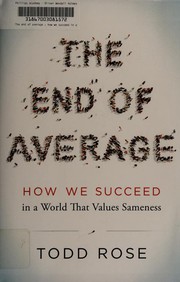
The End of Average: How We Succeed in a World That Values Sameness
By todd rose.
The End of Average: How We Succeed in a World That Values Sameness by Todd Rose is a thought-provoking book on education inequality. Rose challenges the concept of the “average” and argues that our society’s reliance on this flawed measure has led to a system that fails to cater to individuals’ unique strengths and abilities. Drawing on research from psychology, neuroscience, and education, Rose presents a compelling case for embracing diversity and individuality in our approach to learning and success. He offers practical strategies for creating environments that support personalized learning and empower individuals to thrive in a world that values sameness. This book about education inequality is a must-read for educators, policymakers, and anyone interested in rethinking traditional notions of success and achievement.

The Teacher Wars: A History of America’s Most Embattled Profession
By dana goldstein.
The Teacher Wars: A History of America’s Most Embattled Profession by Dana Goldstein is a thought-provoking book about the tumultuous history of teaching in America. Goldstein dives deep into the roots of the ongoing debates and controversies surrounding education inequality, shedding light on the complex issues that have shaped the teaching profession over the years. Through meticulous research and compelling storytelling, the author examines the impact of historical events, social movements, and political agendas on the education system, offering valuable insights into the challenges faced by educators and students alike. This engaging and informative book about education inequality is a must-read for anyone interested in understanding the complexities of the American education system and the ongoing struggles for equity and excellence in schools.

The Privileged Poor: How Elite Colleges Are Failing Disadvantaged Students
By anthony abraham jack.
The Privileged Poor: How Elite Colleges Are Failing Disadvantaged Students by Anthony Abraham Jack is a thought-provoking book on education inequality. Jack delves into the experiences of low-income students at prestigious colleges, shedding light on the challenges they face despite gaining access to these institutions. Through personal narratives and extensive research, the author exposes the disparities in resources, support, and social capital between the “privileged” and “disadvantaged” students within the same elite campus. The book not only highlights the failure of these colleges in adequately accommodating and empowering their disadvantaged students but also offers insights into potential solutions for creating a more inclusive and equitable educational environment. The Privileged Poor is a must-read for anyone interested in understanding and addressing the complexities of inequality within higher education.
Recommended for you:

The Beautiful Struggle: A Father, Two Sons, and an Unlikely Road to Manhood
By ta-nehisi coates.
The Beautiful Struggle, a memoir by Ta-Nehisi Coates , is a powerful and poignant exploration of growing up in Baltimore amidst the challenges of urban life and a fractured education system. Coates reflects on his coming of age, navigating the streets, and the complexities of family dynamics. The book delves into the struggles faced by Coates and his brother as they navigate their way through a world filled with violence, poverty, and the harsh realities of an unequal education system. Coates paints a vivid picture of the obstacles they faced, providing a raw and honest portrayal of the impact of education inequality on young Black men. Through his personal narrative, Coates sheds light on the resilience and determination required to overcome the systemic barriers that perpetuate inequality in education. The Beautiful Struggle is a compelling and insightful book about education inequality that offers a unique perspective on the challenges faced by marginalized communities.

The Trouble with Black Boys: And Other Reflections on Race, Equity, and the Future of Public Education
By pedro a. noguera.
The Trouble with Black Boys: And Other Reflections on Race, Equity, and the Future of Public Education by Pedro A. Noguera is a thought-provoking book on education inequality. Noguera delves into the challenges faced by black boys in the public education system, addressing issues such as racial disparities, inequity, and the impact of poverty on academic achievement. Through a combination of personal anecdotes, research, and analysis, Noguera offers valuable insights into the complex factors contributing to the achievement gap and proposes strategies for creating a more equitable and inclusive educational environment. This book is a must-read for educators, policymakers, and anyone interested in understanding and addressing the systemic barriers that hinder the success of black boys in the education system.
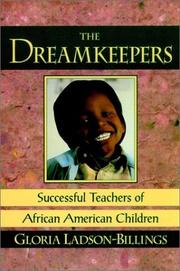
The Dreamkeepers: Successful Teachers of African American Children
By gloria ladson-billings.
The Dreamkeepers: Successful Teachers of African American Children by Gloria Ladson-Billings is a groundbreaking book on education inequality. Ladson-Billings, an acclaimed educator and researcher, provides an in-depth look at the experiences of successful teachers of African American students and the strategies they employ to overcome education inequality. Through compelling narratives and insightful analysis, the book challenges conventional wisdom and sheds light on the critical role of culturally relevant teaching in addressing the unique needs of African American students. The Dreamkeepers offers a powerful and inspiring exploration of how educators can make a meaningful difference in the lives of marginalized students. With its compelling storytelling and thought-provoking research, this book about education inequality is a must-read for anyone passionate about creating more equitable and inclusive educational environments.
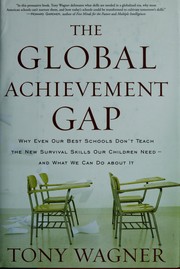
The Global Achievement Gap: Why Even Our Best Schools Don’t Teach the New Survival Skills Our Children Need—and What We Can Do About It
By tony wagner.
The Global Achievement Gap by Tony Wagner is a thought-provoking book on education inequality that delves into why even the best schools are falling short in preparing students for the future. Wagner identifies the critical skills that are missing from traditional education, such as critical thinking, collaboration, and adaptability, and argues that these skills are essential for success in the 21st century. Drawing on research and real-world examples, the book highlights the urgent need for a shift in education to better equip students for the modern workforce. Wagner also offers practical solutions and strategies for parents, educators, and policymakers to bridge the global achievement gap and ensure that our children are prepared for the challenges of the future. This book is a must-read for anyone concerned about the future of education and the impact of education inequality on our society.

The Children in Room E4: American Education on Trial
By susan eaton.
The Children in Room E4: American Education on Trial by Susan Eaton is a compelling book on education inequality that delves into the challenges faced by students in struggling urban schools. Eaton takes readers on a thought-provoking journey through the experiences of the children and teachers in Room E4, highlighting the systemic issues that perpetuate education inequality. Through in-depth research and personal narratives, the book sheds light on the disparities in resources, support, and opportunities that hinder the success of these students. Eaton’s powerful storytelling and thorough examination of the educational system make this a must-read for anyone passionate about addressing education inequality in America. The Children in Room E4 is an eye-opening and impactful book about education inequality that challenges readers to confront the realities faced by marginalized communities within the education system.

The Other Wes Moore: One Name, Two Fates
By wes moore.
The Other Wes Moore: One Name, Two Fates by Wes Moore is a captivating exploration of the impact of environment and opportunity on two men who share the same name. The book delves into the lives of the author, a Rhodes Scholar and White House Fellow, and the other Wes Moore, a convicted murderer serving a life sentence. Through their parallel stories, Moore sheds light on the complexities of fate, choice, and the systems that shape our destinies. The narrative serves as a powerful reflection on the consequences of education inequality, highlighting the disparities in access to resources and support that can ultimately determine the paths individuals take. This compelling and thought-provoking book about education inequality challenges readers to consider the ways in which society can address and rectify these issues.

The Miseducation of the Negro
By carter g. woodson.
The Miseducation of the Negro is a thought-provoking book on education inequality written by Carter G. Woodson. In this influential work, Woodson explores the impact of the American education system on Black Americans, arguing that it has perpetuated a cycle of miseducation and disempowerment. He critiques the curriculum, teaching methods, and societal influences that have led to the misrepresentation and undervaluing of African American history and culture. Woodson’s powerful insights shed light on the systemic barriers that have hindered the intellectual and social advancement of Black individuals. Through compelling analysis and historical context, The Miseducation of the Negro urges readers to reconsider the education system’s role in perpetuating inequality and advocates for a more inclusive and accurate approach to learning. This book is an essential read for anyone interested in understanding and addressing education inequality.

The School-to-Prison Pipeline: Structuring Legal Reform
By catherine y. kim.
The School-to-Prison Pipeline: Structuring Legal Reform by Catherine Y. Kim is an eye-opening book about education inequality in the United States. Kim explores how zero-tolerance policies, harsh disciplinary measures, and the criminalization of student behavior can push vulnerable students, particularly those of color, out of the educational system and into the criminal justice system. Through in-depth research and analysis, Kim unpacks the complex web of policies and practices that perpetuate this harmful phenomenon, shedding light on the ways in which race, class, and disability intersect to create a pathway from school to prison. This book on education inequality offers a comprehensive understanding of the issue and proposes legal reforms to dismantle the pipeline and create a more just and equitable educational system for all students.

Savage Inequalities: Children in America’s Schools
Savage Inequalities: Children in America’s Schools by Jonathan Kozol is a poignant and eye-opening book on education inequality in the United States. Kozol delves into the stark contrasts between schools in affluent neighborhoods and those in impoverished areas, exposing the profound disparities in resources, funding, and opportunities for students. Through vivid storytelling and thorough research, Kozol sheds light on the harsh realities faced by children in underserved communities, highlighting the systemic injustices perpetuating educational inequality. This compelling book about education inequality challenges readers to confront the deep-rooted issues that hinder equal access to quality education for all children. Savage Inequalities serves as a powerful call to action, urging individuals and policymakers to address the pervasive disparities that continue to hinder the potential of our nation’s youth.
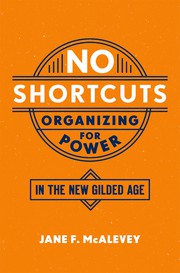
No Shortcuts: Organizing for Power in the New Gilded Age
By jane f. mcalevey.
No Shortcuts: Organizing for Power in the New Gilded Age by Jane F. McAlevey is a compelling book on education inequality that delves into the dynamics of power and organizing in the modern era. McAlevey draws on her extensive experience as a labor and community organizer to provide a comprehensive analysis of how social movements can effectively challenge the status quo and create meaningful change. The book offers a thought-provoking examination of the obstacles and opportunities for addressing education inequality, making it a must-read for anyone passionate about social justice and equity in the education system. With its insightful and practical approach, No Shortcuts is a valuable resource for those seeking to understand and combat the entrenched disparities in education.
In conclusion, these 20 best books about Education Inequality provide valuable insights into the challenges and disparities within the education system. Each book offers a unique perspective and in-depth analysis of the various factors contributing to inequality in education. By delving into these powerful narratives, readers can gain a deeper understanding of the issues at hand and be inspired to take meaningful action towards creating a more equitable educational landscape.
Which Education Inequality book is best?
The best book on Education Inequality can vary with personal preference, but three widely recommended titles are:
- The Shame of the Nation: The Restoration of Apartheid Schooling in America by Jonathan Kozol ,
- The Color of Law: A Forgotten History of How Our Government Segregated America by Richard Rothstein ,
- Unequal Childhoods: Class, Race, and Family Life by Annette Lareau .
Each offers valuable insights and could be a great starting point.
What are the best books to learn about Education Inequality?
For those looking to learn about Education Inequality, there is a wealth of literature that can provide a comprehensive understanding of the subject. Some of the most highly recommended books include:
- Unequal Childhoods: Class, Race, and Family Life by Annette Lareau ,
- The Testing Charade: Pretending to Make Schools Better by Daniel Koretz ,
- The Death and Life of the Great American School System: How Testing and Choice Are Undermining Education by Diane Ravitch ,
- The New Jim Crow: Mass Incarceration in the Age of Colorblindness by Michelle Alexander ,
- The Price of Inequality: How Today’s Divided Society Endangers Our Future by Joseph E. Stiglitz ,
- The End of Average: How We Succeed in a World That Values Sameness by Todd Rose ,
- The Teacher Wars: A History of America’s Most Embattled Profession by Dana Goldstein ,
- The Privileged Poor: How Elite Colleges Are Failing Disadvantaged Students by Anthony Abraham Jack
These books offer a range of perspectives on Education Inequality, covering various aspects and approaches to the subject.
What are the best books on Education Inequality?
The best books on Education Inequality include:
- The Beautiful Struggle: A Father, Two Sons, and an Unlikely Road to Manhood by Ta-Nehisi Coates ,
- The Trouble with Black Boys: And Other Reflections on Race, Equity, and the Future of Public Education by Pedro A. Noguera ,
- The New Jim Crow: Mass Incarceration in the Age of Colorblindness by Michelle Alexander .
Each offers unique insights into the subject. While these books on the topic of Education Inequality are highly regarded, it’s important to note that any list of ‘best’ books is subjective and reflects a range of opinions.
What are the best Education Inequality books of all time?
Choosing the best Education Inequality books of all time can vary depending on who you ask, but seven titles that are often celebrated include
- The Privileged Poor: How Elite Colleges Are Failing Disadvantaged Students by Anthony Abraham Jack ,
- and The Beautiful Struggle: A Father, Two Sons, and an Unlikely Road to Manhood by Ta-Nehisi Coates .
Each of these books has made a significant impact in the field of Education Inequality and continues to be influential today.
Related posts:
Thank you for visiting nature.com. You are using a browser version with limited support for CSS. To obtain the best experience, we recommend you use a more up to date browser (or turn off compatibility mode in Internet Explorer). In the meantime, to ensure continued support, we are displaying the site without styles and JavaScript.
- View all journals
- Explore content
- About the journal
- Publish with us
- Sign up for alerts
Collection 06 July 2022
Understanding and Addressing Inequality in Education
Inequality in education is a defining challenge of our time. Around the world, students from socioeconomically disadvantaged backgrounds are far more likely to underperform in school than are students from advantaged backgrounds. This gap emerges early in development and widens with age. This represents an enormous loss of potential and perpetuates harm into adulthood.
What are the causes of inequality? And what can we do to reduce inequality? With our special Collection in npj Science of Learning, we will work toward developing an interdisciplinary understanding of inequality in education, as this topic goes beyond one single discipline related to learning and education.
This special Collection invites submissions from a wide variety of disciplines, including (but not limited to) psychology, pedagogy, sociology, neuroscience, genetics, economics, and educational science. We are open to monodisciplinary submissions, but we encourage submissions that move beyond disciplinary boundaries, propose inter- or multidisciplinary perspectives on inequality, and approach inequality from new and unexpected angles. We encourage a developmental perspective, so we welcome submissions that focus on a critical developmental phase, transition, or trajectory (e.g., how inequality develops in early childhood or manifests across the transition to university). We invite both empirical articles and theoretical articles (e.g., Comments and Reviews).
Some of the many questions that might be addressed by the articles in this issue include:
- What are the barriers faced by individuals from socioeconomically disadvantaged groups? This might include students from poor or working-class backgrounds, first-generation students, Indigenous students, and students of color.
- How do parents, teachers, and educational contexts (e.g., school norms and policies) contribute to inequality in education? For example, what are the roles of cultural capital and elitism?
- How do genetic and neurocognitive processes interact with contexts to produce inequality in education?
- How do stereotypes and students’ beliefs (e.g., mindsets, self-perceptions) perpetuate inequality in education?
- How can we design interventions that reduce educational inequality at scale? How can these interventions be adapted to local contexts (e.g., in low- and middle-income countries)?
- How can we reconcile individualistic and structural explanations of inequality in education?

- Eddie Brummelman
Associate Professor, University of Amsterdam, the Netherlands
- Nienke van Atteveldt
Professor, Free University Amsterdam, the Netherlands
- Sharon Wolf
Associate Professor, Graduate School of Education, University of Pennsylvania, USA
- Jellie Sierksma
Assistant Professor, the Department of Developmental Psychology
- Collection content
- How to submit
- About the Guest Editors
- Collection policies
Using social and behavioral science to address achievement inequality
Achievement inequality has been on the rise. Globally, students from disadvantaged backgrounds perform worse academically than their peers, even with equal ability. This represents a significant loss of potential and perpetuates inequality. We organized this interdisciplinary Special Collection to uncover experiences that contribute to achievement inequality, identify interventions that reduce it, and sketch a research agenda. We hope it inspires scholars committed to addressing social problems through basic research.
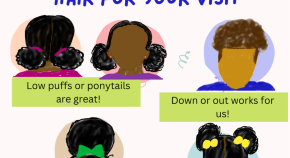
Fostering inclusion in EEG measures of pediatric brain activity
- Eryn J. Adams
- Molly E. Scott
- Sonya V. Troller-Renfree
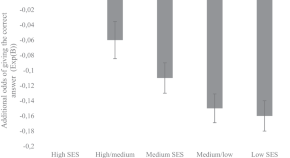
Math items about real-world content lower test-scores of students from families with low socioeconomic status
- Marjolein Muskens
- Willem E. Frankenhuis
- Lex Borghans
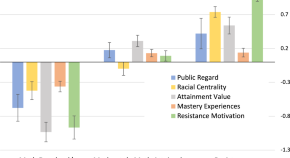
Black adolescents’ motivation to resist the false dichotomy between mathematics achievement and racial identity
- Melody Wilson
- Jamaal Sharif Matthews

The inherence bias in preschoolers’ explanations for achievement differences: replication and extension
- Margaux Renoux
- Sébastien Goudeau
- Andrei Cimpian
Combining perspectives in multidisciplinary research on inequality in education
This comment presents some general principles for multidisciplinary research to capitalize on the growing attention for inequality in education across academic disciplines. The variety of theoretical and methodological perspectives across disciplines results in different conceptual frameworks and empirical designs to study inequality in education. While each framework and design contributes to our shared understanding of the problem, combining these perspectives requires awareness of the various lenses through which educational inequalities are being studied. We identify three dimensions along which perspectives on inequality of education vary between disciplines. These dimensions pertain to (1) how the problem of inequality in education is framed, (2) how inequality in education is empirically evaluated, and (3) how the role of education in fostering (in)equality is conceptualized. In response, we propose three general principles that may help deal with this variation when building a multidisciplinary body of knowledge on inequality in education.
- Louise Elffers
- Eddie Denessen
- Monique Volman
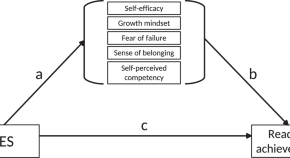
Self-perceptions as mechanisms of achievement inequality: evidence across 70 countries
- Sarah I. Hofer
- Jörg-Henrik Heine
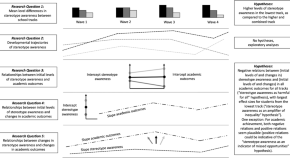
Does students’ awareness of school-track-related stereotypes exacerbate inequalities in education?
- Lisa Bardach
- Claudia Neuendorf
- Ulrich Trautwein
Disrupting links between poverty, chronic stress, and educational inequality
- Madeline B. Harms
- Sherona D. Garrett-Ruffin
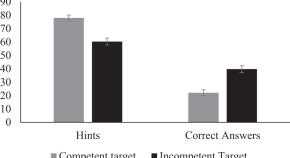
Children perpetuate competence-based inequality when they help peers
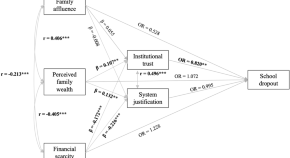
Examining the role of civic attitudes in the link between family wealth and school dropout among tertiary vocational students
- Catrin Finkenauer
- Maartje Boer
- Gonneke W. J. M. Stevens
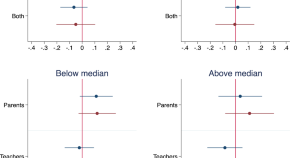
Nudging parents and teachers to improve learning and reduce child labor in Cote d’Ivoire
- Guilherme Lichand

“You did incredibly well!”: teachers’ inflated praise can make children from low-SES backgrounds seem less smart (but more hardworking)
- Emiel Schoneveld
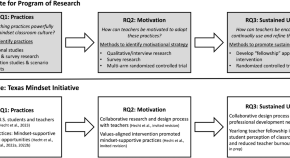
Shifting the mindset culture to address global educational disparities
- Cameron A. Hecht
- Mary C. Murphy
- David S. Yeager
On the promise of personalized learning for educational equity
- Hanna Dumont
- Douglas D. Ready
Overemphasizing individual differences and overlooking systemic factors reinforces educational inequality
- Allison Zengilowski
- Irum Maqbool
- Yuko Munakata
Quick links
- Explore articles by subject
- Guide to authors
- Editorial policies
Paul Finch Unofficial Author Website
20 best books on education inequality – 2023 reading list & recommendations
Are you interested in understanding the complex issue of education inequality? Look no further than this curated list of the 20 best books on education inequality. These thought-provoking works dive deep into the social, economic, and systemic factors that contribute to disparities in educational opportunities. From personal narratives to extensive research, these books offer invaluable insights and potential solutions to address this pressing issue. Whether you’re an educator, a student, or simply passionate about equal access to education, these education inequality books are a must-read.
- 1 The Shame of the Nation: The Restoration of Apartheid Schooling in America
- 2 The Color of Law: A Forgotten History of How Our Government Segregated America
- 3 Unequal Childhoods: Class, Race, and Family Life
- 4 The Opportunity Gap: Achievement and Inequality in Education
- 5 The Testing Charade: Pretending to Make Schools Better
- 6 The Death and Life of the Great American School System: How Testing and Choice Are Undermining Education
- 7 The New Jim Crow: Mass Incarceration in the Age of Colorblindness
- 8 The Price of Inequality: How Today’s Divided Society Endangers Our Future
- 9 The Smartest Kids in the World: And How They Got That Way
- 10 The End of Average: How We Succeed in a World That Values Sameness
- 11 The Teacher Wars: A History of America’s Most Embattled Profession
- 12 The Privileged Poor: How Elite Colleges Are Failing Disadvantaged Students
- 13 The Beautiful Struggle: A Father, Two Sons, and an Unlikely Road to Manhood
- 14 The Trouble with Black Boys: And Other Reflections on Race, Equity, and the Future of Public Education
- 15 The Dreamkeepers: Successful Teachers of African American Children
- 16 The Global Achievement Gap: Why Even Our Best Schools Don’t Teach the New Survival Skills Our Children Need—and What We Can Do About It
- 17 The Children in Room E4: American Education on Trial
- 18 The Other Wes Moore: One Name, Two Fates
- 19 The Miseducation of the Negro
- 20 The School-to-Prison Pipeline: Structuring Legal Reform
- 21 Conclusion

Buy the book
The Shame of the Nation: The Restoration of Apartheid Schooling in America
By jonathan kozol.
The Shame of the Nation: The Restoration of Apartheid Schooling in America by Jonathan Kozol is a captivating book that shines a spotlight on the persistent and deeply troubling issue of education inequality in the United States. Known as a thought-provoking book on education inequality, Kozol delves into the reality that our education system is becoming increasingly segregated, mirroring the apartheid schools of the past.
In this eye-opening book about education inequality, Kozol takes readers on a journey through the neglected and underfunded schools in inner-city neighborhoods, highlighting the stark contrast between these institutions and their affluent counterparts. Through extensive research and personal interviews, Kozol exposes the harsh truths that many students, particularly those from minority backgrounds, face on a daily basis.
The author’s writing style is both compelling and heart-wrenching, as he shares the stories of individual students and families who are trapped in a system that perpetuates inequality. Kozol’s use of vivid descriptions and powerful anecdotes allows readers to truly grasp the magnitude of the educational divide in America.
As a book on education inequality, The Shame of the Nation challenges readers to confront the uncomfortable truth that our society is failing its most vulnerable children. Kozol raises important questions about the inherent injustices within our education system and calls for urgent action to address this pressing issue.
This education inequality book serves as a wake-up call to educators, policymakers, and society as a whole, reminding us that every child deserves equal access to a quality education. Kozol’s passionate plea for change and his unwavering commitment to justice make The Shame of the Nation an essential read for anyone interested in creating a more equitable future for our children.

The Color of Law: A Forgotten History of How Our Government Segregated America
By richard rothstein.
The Color of Law: A Forgotten History of How Our Government Segregated America by Richard Rothstein is a groundbreaking book on education inequality that unravels the intricate web of racial segregation in the United States. Through meticulous research and compelling storytelling, Rothstein reveals the deliberate policies and actions of the government that perpetuated systemic discrimination and created lasting divisions in our society.
This eye-opening book about education inequality challenges the widely held belief that segregation was solely a result of private prejudice or individual choices. Rothstein meticulously traces the origins of racial segregation to government policies, such as redlining, zoning laws, and discriminatory lending practices. He highlights how these policies had a profound impact on the lives of African Americans, continuing to shape the unequal educational opportunities and living conditions they face today.
Rothstein’s powerful narrative exposes the deep-rooted injustices that have contributed to the persistent disparities in educational outcomes, wealth accumulation, and social mobility among different racial groups. By shedding light on this forgotten history, he urges us to confront the legacy of segregation and work towards creating a more equitable society.
With its compelling arguments and extensive research, this education inequality book offers a thought-provoking perspective on the systemic barriers that have hindered progress towards racial equality. The Color of Law serves as a powerful reminder that addressing education inequality requires acknowledging and challenging the government’s role in perpetuating segregation. It is an essential read for anyone seeking a deeper understanding of the complex roots of racial inequities and the urgent need for systemic change.

Unequal Childhoods: Class, Race, and Family Life
By annette lareau.
Unequal Childhoods: Class, Race, and Family Life by Annette Lareau is a fascinating exploration of the complex dynamics that contribute to education inequality in America. This thought-provoking book delves into the various ways in which social class and race affect family life and ultimately shape children’s educational opportunities.
Lareau’s research takes readers on a journey through the lives of families from different socioeconomic backgrounds, offering a unique insight into the daily routines, parenting styles, and educational strategies employed by each group. By examining the stark differences in child-rearing practices and the varying levels of access to resources and opportunities, the author sheds light on the profound impact that these factors have on children’s academic success.
Through meticulous analysis, Lareau challenges the notion that educational inequality can be solely attributed to individual effort or ability. Instead, she argues that structural factors such as social class and race play a pivotal role in shaping the educational trajectories of children. This compelling argument serves as a wake-up call, urging society to confront the systemic barriers that perpetuate education inequality.
Unequal Childhoods is an eye-opening book that forces us to critically examine the deeply entrenched disparities in our education system. It is a must-read for anyone seeking to understand the complex interplay of class, race, and family dynamics in shaping educational outcomes. With its rich insights and thought-provoking analysis, this book is an invaluable resource for those passionate about promoting equity in education.

The Opportunity Gap: Achievement and Inequality in Education
By prudence l. carter.
The Opportunity Gap: Achievement and Inequality in Education is a captivating book that delves into the complex issue of education inequality. If you’re looking for a thought-provoking read that explores the disparities in educational opportunities, this book on education inequality is perfect for you. Prudence L. Carter, the author, provides a comprehensive analysis of the factors that contribute to the achievement gap among students from different socioeconomic backgrounds. Through compelling research and real-life examples, Carter highlights the systemic barriers that hinder the progress of marginalized students. This book about education inequality offers valuable insights into the ways in which race, class, and gender intersect with educational outcomes, shaping the future prospects of countless individuals. Prepare to be enlightened and inspired as you navigate the pages of this eye-opening exploration of education inequality.

The Testing Charade: Pretending to Make Schools Better
By daniel koretz.
The Testing Charade: Pretending to Make Schools Better by Daniel Koretz is a thought-provoking book on education inequality that challenges the widely held belief that standardized testing is an effective tool for improving educational outcomes. Koretz argues that the emphasis on high-stakes testing in education policy has created a system that prioritizes test scores over genuine learning, leading to a pervasive culture of cheating, gaming the system, and narrowing of curriculum.
In this eye-opening book about education inequality, Koretz meticulously dissects the flaws and unintended consequences of our current testing-driven approach to education. He argues that the pressure to raise test scores has resulted in a distorted education system that values test preparation above all else, leaving little room for creativity, critical thinking, and the development of important life skills.
Koretz’s analysis is both thorough and engaging, weaving together research findings, real-life examples, and personal anecdotes to paint a vivid picture of the detrimental effects of the testing charade. He tackles issues such as the widening achievement gap, the impact of testing on students’ mental health, and the erosion of teacher autonomy and professional judgment.
This education inequality book provides a valuable insight into the complexities of our education system and challenges readers to question the efficacy of relying heavily on standardized testing as a measure of success. Koretz offers alternative approaches to assessment and highlights the importance of a holistic education that prioritizes the well-rounded development of students.
The Testing Charade is a must-read for anyone interested in understanding the deep-rooted problems of our education system and seeking solutions to combat education inequality. Koretz’s compelling arguments and compelling writing style make this book an essential resource for educators, policymakers, parents, and anyone invested in creating a more equitable and effective education system.

The Death and Life of the Great American School System: How Testing and Choice Are Undermining Education
By diane ravitch.
The Death and Life of the Great American School System: How Testing and Choice Are Undermining Education by Diane Ravitch is a thought-provoking book on education inequality. Ravitch, a renowned historian and former advocate for standardized testing and school choice, presents a compelling argument about the detrimental effects of these policies on our education system.
In this eye-opening book about education inequality, Ravitch explores how the emphasis on high-stakes testing and the proliferation of charter schools have led to the erosion of our public education system. She delves into the history of these reforms and explains how they have widened the achievement gap and undermined the quality of education for all students.
Ravitch challenges the prevailing narrative that testing and choice are the solutions to improve education. Drawing from her extensive research and experience, she argues that these policies have instead created a culture of competition, narrowed the curriculum, and marginalized low-income students and communities.
With her engaging writing style and thorough analysis, Ravitch not only exposes the flaws in current education policies but also offers a compelling vision for a more equitable and inclusive system. She advocates for a return to a holistic approach to education that values creativity, critical thinking, and collaboration.
This education inequality book is a must-read for educators, policymakers, and anyone concerned about the future of our schools. Ravitch’s passionate and well-reasoned arguments will challenge your assumptions and inspire you to advocate for a more just and comprehensive education system.

The New Jim Crow: Mass Incarceration in the Age of Colorblindness
By michelle alexander.
The New Jim Crow is a groundbreaking book that exposes the hidden truth behind the American criminal justice system. Written by Michelle Alexander, a renowned civil rights lawyer, this eye-opening work shines a light on the devastating impact of mass incarceration on communities of color.
In this powerful examination of the racial caste system in America, Alexander unveils how the war on drugs has become a new form of racial control, perpetuating a cycle of discrimination and oppression. She argues that the criminal justice system, rather than being colorblind as many claim, disproportionately targets and disproportionately punishes Black and Brown individuals.
Through meticulous research and compelling analysis, Alexander demonstrates how the system operates as a modern-day form of segregation, comparable to the Jim Crow laws of the past. She reveals how the consequences of mass incarceration extend far beyond prison walls, affecting individuals, families, and entire communities for generations.
With a blend of historical context, legal expertise, and personal narratives, The New Jim Crow challenges readers to confront the uncomfortable reality of systemic racism in the United States. It serves as a call to action, urging us to acknowledge and dismantle the deeply entrenched structures that perpetuate racial inequality.
This book about education inequality goes beyond surface-level discussions and delves into the underlying mechanisms that perpetuate racial disparities. It is a must-read for anyone seeking a deeper understanding of the issues surrounding mass incarceration and its devastating impact on communities of color. Prepare to have your perspectives challenged and your eyes opened to the insidious ways in which racism operates in our society.

The Price of Inequality: How Today’s Divided Society Endangers Our Future
By joseph e. stiglitz.
The Price of Inequality: How Today’s Divided Society Endangers Our Future by Joseph E. Stiglitz is a thought-provoking book on education inequality that shines a bright light on the alarming disparities in our society. Stiglitz, a Nobel laureate and renowned economist, fearlessly explores the consequences of a society that is increasingly divided between the haves and the have-nots.
In this gripping book about education inequality, Stiglitz argues that education inequality is not just a moral issue, but also an economic one. He meticulously dissects how the unequal access to quality education perpetuates a cycle of poverty and limits upward mobility for millions of individuals. Stiglitz reveals the harsh truth that education, which should be the great equalizer, has become a powerful tool for reinforcing existing inequalities.
With his impressive expertise and extensive research, Stiglitz presents a compelling case for why education inequality should be at the forefront of our minds when discussing societal progress. He highlights the detrimental effects of a system that rewards the privileged few while leaving behind countless talented individuals who lack the resources to reach their full potential.
This eye-opening education inequality book forces readers to confront uncomfortable truths about our society. Stiglitz’s compelling arguments and undeniable evidence make it impossible to ignore the urgent need for change. As he delves into the consequences of growing inequality, Stiglitz exposes the high price we all pay when a significant portion of the population is denied equal opportunities to succeed.
The Price of Inequality is not just a book about education inequality; it is a call to action. Stiglitz challenges us to reevaluate our priorities and work towards creating a fairer and more inclusive society. With his powerful insights and wealth of knowledge, Stiglitz reminds us that a society that neglects the potential of its citizens is a society that risks its own future.

The Smartest Kids in the World: And How They Got That Way
By amanda ripley.
The Smartest Kids in the World: And How They Got That Way by Amanda Ripley is a fascinating exploration of the education inequality around the world. This thought-provoking book on education inequality takes readers on a journey across countries as it uncovers the secrets behind the success of students in Finland, South Korea, and Poland.
Ripley’s writing is engaging and immersive, making it easy for readers to be drawn into the stories of real students and teachers in these countries. Through their experiences, she reveals the stark differences in education systems and highlights the factors that contribute to the remarkable achievement of these students.
The author’s research and interviews with students, teachers, and education experts shed light on the various strategies and policies that have led to the success of these nations. From Finland’s emphasis on highly trained teachers and student well-being to South Korea’s intense focus on academic pressure and competition, Ripley highlights the diverse approaches that have shaped these countries’ education systems.
What sets this book about education inequality apart is its ability to challenge preconceived notions about what makes a successful education system. By examining the experiences of students in different countries, Ripley forces readers to question their assumptions and consider the ways in which their own education systems may be falling short.
Overall, The Smartest Kids in the World is a thought-provoking and eye-opening education inequality book that offers valuable insights into what it takes to create successful education systems. Whether you are a student, parent, teacher, or simply interested in the state of education worldwide, this book is sure to leave you with a fresh perspective and a desire for change.

The End of Average: How We Succeed in a World That Values Sameness
By todd rose.
The End of Average: How We Succeed in a World That Values Sameness by Todd Rose is a groundbreaking book that challenges the notion of education inequality in our society. In this eye-opening exploration, Rose delves into the flaws of the traditional education system and reveals the damaging effects of trying to fit individuals into a standardized mold.
This thought-provoking book on education inequality takes readers on a journey through history, examining how the concept of the ‘average’ came to dominate our educational institutions. Rose argues that by valuing sameness, we have inadvertently stifled the potential of countless individuals who do not fit neatly into these predetermined categories.
Through compelling examples and scientific research, Rose dismantles the myth that there is a single ‘average’ student or ‘normal’ way of learning. He highlights the diverse range of abilities and talents that exist within each individual and emphasizes the importance of recognizing and nurturing these unique qualities.
With his refreshing perspective, Rose offers practical solutions for transforming our educational system and creating an environment that celebrates individuality. He advocates for personalized learning experiences that cater to the specific needs and strengths of each student, rather than trying to force them into a one-size-fits-all model.
By challenging the status quo, The End of Average sparks a crucial conversation about education inequality and the need for a more inclusive and dynamic approach to learning. It empowers readers to embrace their own uniqueness and encourages educators and policymakers to rethink their strategies in order to unlock the full potential of every individual.

The Teacher Wars: A History of America’s Most Embattled Profession
By dana goldstein.
The Teacher Wars: A History of America’s Most Embattled Profession by Dana Goldstein is a fascinating exploration of the struggles and challenges faced by educators throughout history. This eye-opening book shines a light on the complex and often controversial world of teaching, making it an essential read for anyone interested in the topic of education inequality.
Goldstein delves deep into the historical roots of the teacher profession, from the early days of common schools to the modern era, uncovering the battles fought by teachers for better pay, working conditions, and respect. With meticulous research and compelling storytelling, she reveals the underlying factors that have contributed to the persistent education inequality that continues to plague our society today.
Through her vivid narratives, Goldstein brings to life the experiences of teachers from different eras, highlighting the immense challenges they faced in their pursuit of providing quality education to all children. From the struggles of female teachers fighting for equal rights to the racial disparities in education, this book sheds light on the systemic issues that have shaped and continue to shape our education system.
What sets The Teacher Wars apart is its balanced approach, presenting a nuanced view of the challenges facing teachers, policymakers, and society as a whole. Goldstein explores the various reforms and initiatives that have been implemented over the years, examining their impact on both teachers and students. This comprehensive analysis provides readers with a deeper understanding of the complexities involved in addressing education inequality.
Whether you are an educator, a student, or simply curious about the state of education in America, The Teacher Wars is a must-read. Goldstein’s compelling storytelling and in-depth research make this book not only informative but also engaging and thought-provoking. It will undoubtedly spark important conversations about the future of education and how we can work towards a more equitable system for all.

The Privileged Poor: How Elite Colleges Are Failing Disadvantaged Students
by Anthony Abraham Jack
If you’re looking for a thought-provoking and eye-opening book on education inequality, then Anthony Abraham Jack’s The Privileged Poor: How Elite Colleges Are Failing Disadvantaged Students is a must-read. This insightful book delves deep into the challenges faced by disadvantaged students attending prestigious universities, shedding light on the stark disparities that exist within our education system.
Jack, a Harvard graduate who himself experienced the complexities of being a low-income student at an elite institution, offers a unique perspective on the issue. Through extensive research and personal anecdotes, he uncovers the hidden obstacles that disadvantaged students encounter, even after gaining admission to some of the most esteemed colleges in the country.
With a keen understanding of the social dynamics at play, Jack explores the concept of the “privileged poor” – students who come from disadvantaged backgrounds but attended elite private high schools. These students, though facing financial struggles, possess the cultural capital and familiarity with the expectations of prestigious institutions, giving them a distinct advantage over their peers from public schools or underprivileged communities.
Jack challenges the notion that gaining admission to an elite college is the ultimate equalizer, highlighting the disparities that persist within these institutions. From the alienation felt by low-income students on campus to the lack of support systems tailored to their unique needs, he delves into the structural shortcomings that perpetuate this cycle of inequality.
Through his research, Jack also examines the experiences of low-income students who attend community colleges, providing a comprehensive analysis of the obstacles faced by disadvantaged students across various educational pathways.
In The Privileged Poor, Jack not only exposes the flaws in our education system but also offers practical solutions for institutions to better support and uplift disadvantaged students. By reimagining admissions processes and implementing targeted support programs, he argues that elite colleges can truly fulfill their mission of providing equal opportunities to all students, regardless of their socioeconomic background.
This book about education inequality serves as a wake-up call, urging readers to critically examine the disparities that exist within our educational institutions. Through Jack’s compelling storytelling and insightful analysis, The Privileged Poor is a powerful tool for understanding and addressing the systemic challenges faced by disadvantaged students in their pursuit of higher education.

The Beautiful Struggle: A Father, Two Sons, and an Unlikely Road to Manhood
By ta-nehisi coates.
The Beautiful Struggle: A Father, Two Sons, and an Unlikely Road to Manhood by Ta-Nehisi Coates is a captivating memoir that delves into the complex world of education inequality. Coates takes readers on a remarkable journey, offering a unique perspective on the challenges faced by young black men growing up in a society plagued by systemic disparities.
This gripping narrative immerses readers in Coates’ personal experiences, as he navigates the treacherous streets of Baltimore and confronts the harsh realities of a broken educational system. With vivid storytelling and raw emotion, Coates sheds light on the struggles faced by marginalized communities and the profound impact of education inequality on their lives.
Through his powerful prose, Coates not only exposes the deep-rooted injustices of the education system but also highlights the resilience and strength of those who refuse to be defined by their circumstances. His honest and introspective account serves as a wake-up call, urging readers to confront the urgent need for change and to challenge the status quo.
With its thought-provoking narrative and unflinching examination of education inequality, The Beautiful Struggle is a must-read for anyone seeking to understand the profound impact of systemic disparities and the relentless pursuit of equality. Coates’ compelling storytelling will leave readers inspired and determined to fight for a more just and equitable education system.

The Trouble with Black Boys: And Other Reflections on Race, Equity, and the Future of Public Education
By pedro a. noguera.
The Trouble with Black Boys: And Other Reflections on Race, Equity, and the Future of Public Education by Pedro A. Noguera is a thought-provoking book on education inequality. In this powerful and insightful work, Noguera delves into the complex issues surrounding race, equity, and the future of public education.
Through his extensive research and personal experiences as an educator, Noguera sheds light on the challenges faced by black boys in the education system and offers valuable insights into how we can create a more equitable and inclusive environment for all students.
This book about education inequality explores various factors that contribute to the achievement gap between black boys and their peers, including systemic racism, poverty, and the lack of culturally responsive teaching practices. Noguera argues that addressing these issues requires a comprehensive approach that involves not only schools but also families, communities, and policymakers.
Noguera’s writing is engaging and accessible, making complex ideas and research accessible to a wide audience. He combines personal anecdotes with data-driven analysis to provide a compelling case for the urgent need to address education inequality.
Overall, The Trouble with Black Boys is an essential read for anyone interested in understanding and addressing the persistent disparities within our education system. Noguera’s insights and recommendations offer a roadmap for creating a more just and equitable future for all students, regardless of their race or background.

The Dreamkeepers: Successful Teachers of African American Children
By gloria ladson-billings.
Gloria Ladson-Billings’ The Dreamkeepers: Successful Teachers of African American Children is a captivating exploration of the challenges and triumphs faced by educators in the face of education inequality. This thought-provoking book shines a light on the remarkable teachers who have made a difference in the lives of African American students, defying the odds and inspiring hope.
Within the pages of this remarkable book on education inequality, Ladson-Billings delves deep into the experiences of these teachers, highlighting their unique approaches and strategies that have transformed the lives of their students. She skillfully weaves together personal stories, research, and educational theory to create a compelling narrative that challenges conventional wisdom and offers a fresh perspective on the importance of culturally relevant teaching.
The Dreamkeepers is not just another book about education inequality; it is a powerful call to action. Ladson-Billings reminds us that education is not a one-size-fits-all solution and that the experiences and backgrounds of students must be taken into account. She argues that teachers must embrace the cultural identities of their students and create inclusive learning environments that celebrate diversity.
Through her engaging storytelling and insightful analysis, Ladson-Billings shows us that education inequality is not an insurmountable problem. The Dreamkeepers offers a glimmer of hope and inspiration, reminding us that every child deserves a chance to succeed, regardless of their background. This education inequality book is a must-read for educators, policymakers, and anyone passionate about creating a more equitable education system.

The Global Achievement Gap: Why Even Our Best Schools Don’t Teach the New Survival Skills Our Children Need—and What We Can Do About It
By tony wagner.
The Global Achievement Gap: Why Even Our Best Schools Don’t Teach the New Survival Skills Our Children Need—and What We Can Do About It by Tony Wagner
Are our schools failing to prepare our children for the real world? Tony Wagner’s groundbreaking book, The Global Achievement Gap: Why Even Our Best Schools Don’t Teach the New Survival Skills Our Children Need—and What We Can Do About It, explores the alarming education inequality that exists in our modern society.
In this eye-opening book about education inequality, Wagner argues that our current education system is outdated and no longer meets the needs of the 21st century. He highlights the widening gap between what schools teach and what employers expect from their future workforce.
Wagner identifies seven essential survival skills that are crucial for success in the global economy: critical thinking and problem-solving, collaboration across networks, agility and adaptability, initiative and entrepreneurship, effective oral and written communication, accessing and analyzing information, and curiosity and imagination.
Through extensive research and interviews with employers, educators, and students, Wagner paints a vivid picture of the urgent need for a paradigm shift in education. He emphasizes the importance of teaching these survival skills alongside traditional academic subjects, and provides practical strategies for educators, parents, and policymakers to bridge the gap.
This thought-provoking book on education inequality challenges our assumptions about what it means to be well-educated in the 21st century. Wagner’s insights will leave readers questioning the effectiveness of our current education system and inspire them to take action towards creating a more equitable and relevant learning experience for all students.

The Children in Room E4: American Education on Trial
By susan eaton.
The Children in Room E4: American Education on Trial by Susan Eaton is a captivating book about education inequality. It delves deep into the heart-wrenching stories of the students in Room E4, a classroom in Hartford, Connecticut, that serves as a microcosm of the struggles faced by marginalized children across America.
This powerful book on education inequality sheds light on the stark disparities that exist within our education system. Through the eyes of the students, Eaton exposes the harsh realities of poverty, racial segregation, and inadequate resources that plague their learning environment.
With meticulous research and compelling storytelling, Eaton unveils the systemic barriers that hinder the academic success of these children. She examines the impact of biased educational policies, limited funding, and the perpetuation of racial and socioeconomic segregation.
Eaton’s exploration of the lives of these students goes beyond statistics and data, allowing readers to empathize with their struggles and triumphs. She highlights the resilience and determination of the children, as well as the dedicated educators who fight tirelessly to provide them with a quality education despite the odds stacked against them.
This education inequality book serves as a wake-up call, compelling readers to confront the deeply rooted issues in our educational system. It challenges us to take action and advocate for equitable opportunities for all children, regardless of their background or zip code.
The Children in Room E4: American Education on Trial is a must-read for anyone passionate about social justice and the pursuit of equal educational opportunities. It is a poignant reminder that every child deserves a fair chance to succeed and that we must strive to create a more just and inclusive education system.

The Other Wes Moore: One Name, Two Fates
By wes moore.
The Other Wes Moore: One Name, Two Fates is a captivating book that delves into the profound impact of education inequality. This remarkable story revolves around two individuals who share the same name, Wes Moore, but end up leading drastically different lives.
Through his poignant narrative, Wes Moore explores the intricate web of circumstances and choices that shape our destinies. The book serves as a powerful testament to the stark consequences of education inequity, shedding light on the divergent paths that can result from a lack of access to quality education.
With an empathetic and thought-provoking approach, Moore delves into the lives of both Wes Moores, highlighting the crucial role education plays in determining one’s future. He skillfully weaves together personal anecdotes, societal analysis, and compelling research, painting a vivid picture of the challenges faced by disadvantaged communities.
Through the lens of these two contrasting stories, The Other Wes Moore offers a broader examination of the systemic issues that perpetuate education inequality. It sparks a necessary dialogue about the urgent need for equitable educational opportunities and the profound impact they can have on individuals and society as a whole.
This book is a must-read for anyone passionate about understanding and addressing the deep-rooted disparities within our education system. It serves as a call to action, urging readers to advocate for change and to strive towards a future where every individual has an equal chance to fulfill their potential.

The Miseducation of the Negro
By carter g. woodson.
The Miseducation of the Negro by Carter G. Woodson is an eye-opening book on the pervasive issue of education inequality. This literary masterpiece delves deep into the intricacies of a broken system that has shaped the lives of countless individuals. Woodson’s work sheds light on the dire consequences of a miseducation, highlighting the long-lasting effects it has on both individuals and communities. Through the use of compelling anecdotes and historical analysis, Woodson uncovers the harsh realities of a society that perpetuates systemic disparities in education, ultimately challenging readers to question and confront the status quo. This thought-provoking book about education inequality is a must-read for anyone seeking to understand the root causes and potential solutions to this pressing issue. Prepare to be enlightened, inspired, and motivated to take action against education inequality.

The School-to-Prison Pipeline: Structuring Legal Reform
By catherine y. kim.
The School-to-Prison Pipeline: Structuring Legal Reform by Catherine Y. Kim is an eye-opening book on education inequality that shines a much-needed spotlight on the systemic issues plaguing our education system. Kim explores the alarming trend of students, particularly those from marginalized communities, being funneled from schools directly into the criminal justice system.
In this thought-provoking book about education inequality, Kim meticulously dissects the various factors that contribute to this pipeline, including zero-tolerance policies, harsh disciplinary measures, and the over-policing of schools. By examining case studies and legal analysis, she unveils the deep-rooted biases and structural flaws that perpetuate this cycle of injustice.
Kim’s work is not just a critique; it is a call to action. She outlines potential solutions and demonstrates how legal reform can be a powerful tool in dismantling the school-to-prison pipeline. Through her research, she empowers readers to challenge the status quo and advocate for change in their own communities.
This education inequality book is a must-read for anyone passionate about social justice and equal access to education. Kim’s compelling arguments and comprehensive research make it impossible to ignore the urgent need for reform. The School-to-Prison Pipeline is a wake-up call that demands our attention and compels us to take action for a fairer, more equitable education system.
In conclusion, these 20 books about education inequality offer a comprehensive exploration of the challenges and solutions surrounding this pressing issue. Through thought-provoking narratives, rigorous research, and compelling arguments, these books shed light on the disparities that exist within our education system and provide valuable insights for educators, policymakers, and individuals committed to creating a more equitable future. Whether you are an advocate for change or simply seeking to deepen your understanding, these books are essential reads that will inspire and empower you to take action.
Featured Topics
Featured series.
A series of random questions answered by Harvard experts.
Explore the Gazette
Read the latest.

‘We have the most motivated people, the best athletes. How far can we take this?’

Harvard Library acquires copy of ‘Green Book’

Looking at how prejudice is learned, passed
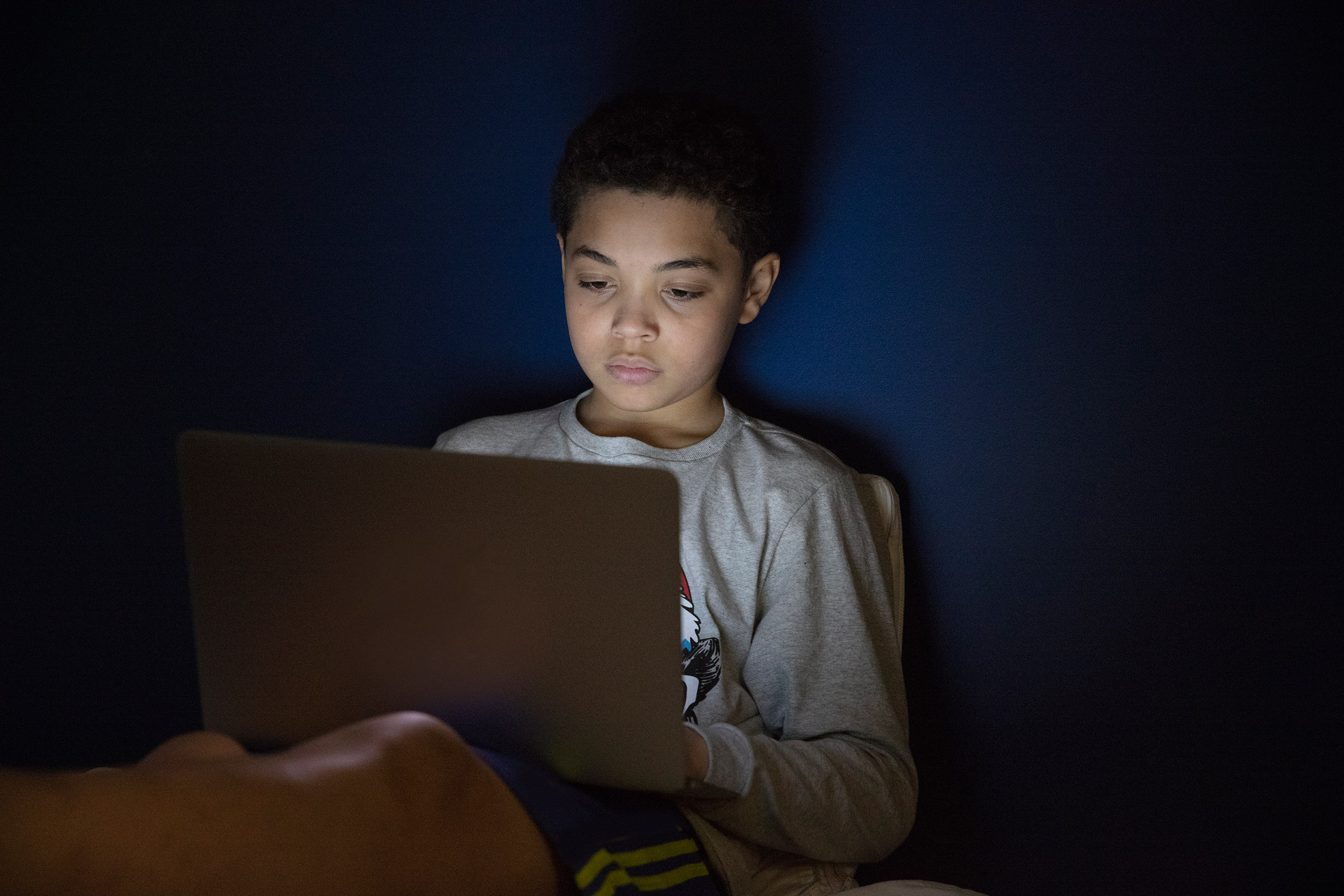
How COVID taught America about inequity in education
Harvard Correspondent
Remote learning turned spotlight on gaps in resources, funding, and tech — but also offered hints on reform
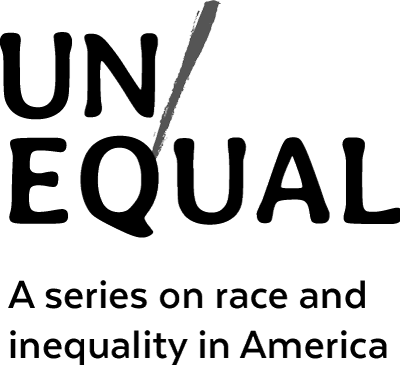
“Unequal” is a multipart series highlighting the work of Harvard faculty, staff, students, alumni, and researchers on issues of race and inequality across the U.S. This part looks at how the pandemic called attention to issues surrounding the racial achievement gap in America.
The pandemic has disrupted education nationwide, turning a spotlight on existing racial and economic disparities, and creating the potential for a lost generation. Even before the outbreak, students in vulnerable communities — particularly predominately Black, Indigenous, and other majority-minority areas — were already facing inequality in everything from resources (ranging from books to counselors) to student-teacher ratios and extracurriculars.
The additional stressors of systemic racism and the trauma induced by poverty and violence, both cited as aggravating health and wellness as at a Weatherhead Institute panel , pose serious obstacles to learning as well. “Before the pandemic, children and families who are marginalized were living under such challenging conditions that it made it difficult for them to get a high-quality education,” said Paul Reville, founder and director of the Education Redesign Lab at the Harvard Graduate School of Education (GSE).
Educators hope that the may triggers a broader conversation about reform and renewed efforts to narrow the longstanding racial achievement gap. They say that research shows virtually all of the nation’s schoolchildren have fallen behind, with students of color having lost the most ground, particularly in math. They also note that the full-time reopening of schools presents opportunities to introduce changes and that some of the lessons from remote learning, particularly in the area of technology, can be put to use to help students catch up from the pandemic as well as to begin to level the playing field.
The disparities laid bare by the COVID-19 outbreak became apparent from the first shutdowns. “The good news, of course, is that many schools were very fast in finding all kinds of ways to try to reach kids,” said Fernando M. Reimers , Ford Foundation Professor of the Practice in International Education and director of GSE’s Global Education Innovation Initiative and International Education Policy Program. He cautioned, however, that “those arrangements don’t begin to compare with what we’re able to do when kids could come to school, and they are particularly deficient at reaching the most vulnerable kids.” In addition, it turned out that many students simply lacked access.
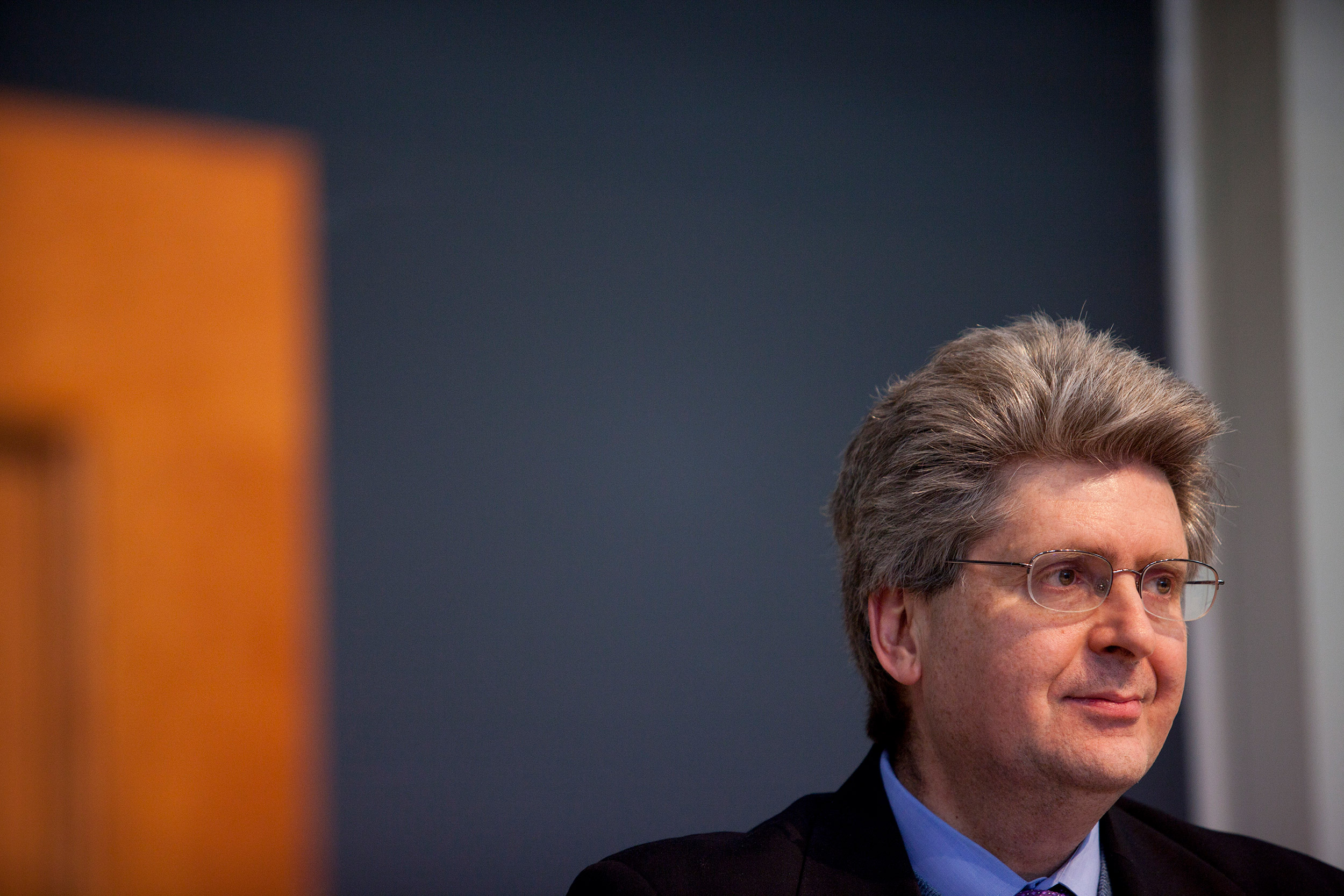
“We’re beginning to understand that technology is a basic right. You cannot participate in society in the 21st century without access to it,” says Fernando Reimers of the Graduate School of Education.
Stephanie Mitchell/Harvard file photo
The rate of limited digital access for households was at 42 percent during last spring’s shutdowns, before drifting down to about 31 percent this fall, suggesting that school districts improved their adaptation to remote learning, according to an analysis by the UCLA Center for Neighborhood Knowledge of U.S. Census data. (Indeed, Education Week and other sources reported that school districts around the nation rushed to hand out millions of laptops, tablets, and Chromebooks in the months after going remote.)
The report also makes clear the degree of racial and economic digital inequality. Black and Hispanic households with school-aged children were 1.3 to 1.4 times as likely as white ones to face limited access to computers and the internet, and more than two in five low-income households had only limited access. It’s a problem that could have far-reaching consequences given that young students of color are much more likely to live in remote-only districts.
“We’re beginning to understand that technology is a basic right,” said Reimers. “You cannot participate in society in the 21st century without access to it.” Too many students, he said, “have no connectivity. They have no devices, or they have no home circumstances that provide them support.”
The issues extend beyond the technology. “There is something wonderful in being in contact with other humans, having a human who tells you, ‘It’s great to see you. How are things going at home?’” Reimers said. “I’ve done 35 case studies of innovative practices around the world. They all prioritize social, emotional well-being. Checking in with the kids. Making sure there is a touchpoint every day between a teacher and a student.”
The difference, said Reville, is apparent when comparing students from different economic circumstances. Students whose parents “could afford to hire a tutor … can compensate,” he said. “Those kids are going to do pretty well at keeping up. Whereas, if you’re in a single-parent family and mom is working two or three jobs to put food on the table, she can’t be home. It’s impossible for her to keep up and keep her kids connected.
“If you lose the connection, you lose the kid.”
“COVID just revealed how serious those inequities are,” said GSE Dean Bridget Long , the Saris Professor of Education and Economics. “It has disproportionately hurt low-income students, students with special needs, and school systems that are under-resourced.”
This disruption carries throughout the education process, from elementary school students (some of whom have simply stopped logging on to their online classes) through declining participation in higher education. Community colleges, for example, have “traditionally been a gateway for low-income students” into the professional classes, said Long, whose research focuses on issues of affordability and access. “COVID has just made all of those issues 10 times worse,” she said. “That’s where enrollment has fallen the most.”
In addition to highlighting such disparities, these losses underline a structural issue in public education. Many schools are under-resourced, and the major reason involves sources of school funding. A 2019 study found that predominantly white districts got $23 billion more than their non-white counterparts serving about the same number of students. The discrepancy is because property taxes are the primary source of funding for schools, and white districts tend to be wealthier than those of color.
The problem of resources extends beyond teachers, aides, equipment, and supplies, as schools have been tasked with an increasing number of responsibilities, from the basics of education to feeding and caring for the mental health of both students and their families.
“You think about schools and academics, but what COVID really made clear was that schools do so much more than that,” said Long. A child’s school, she stressed “is social, emotional support. It’s safety. It’s the food system. It is health care.”
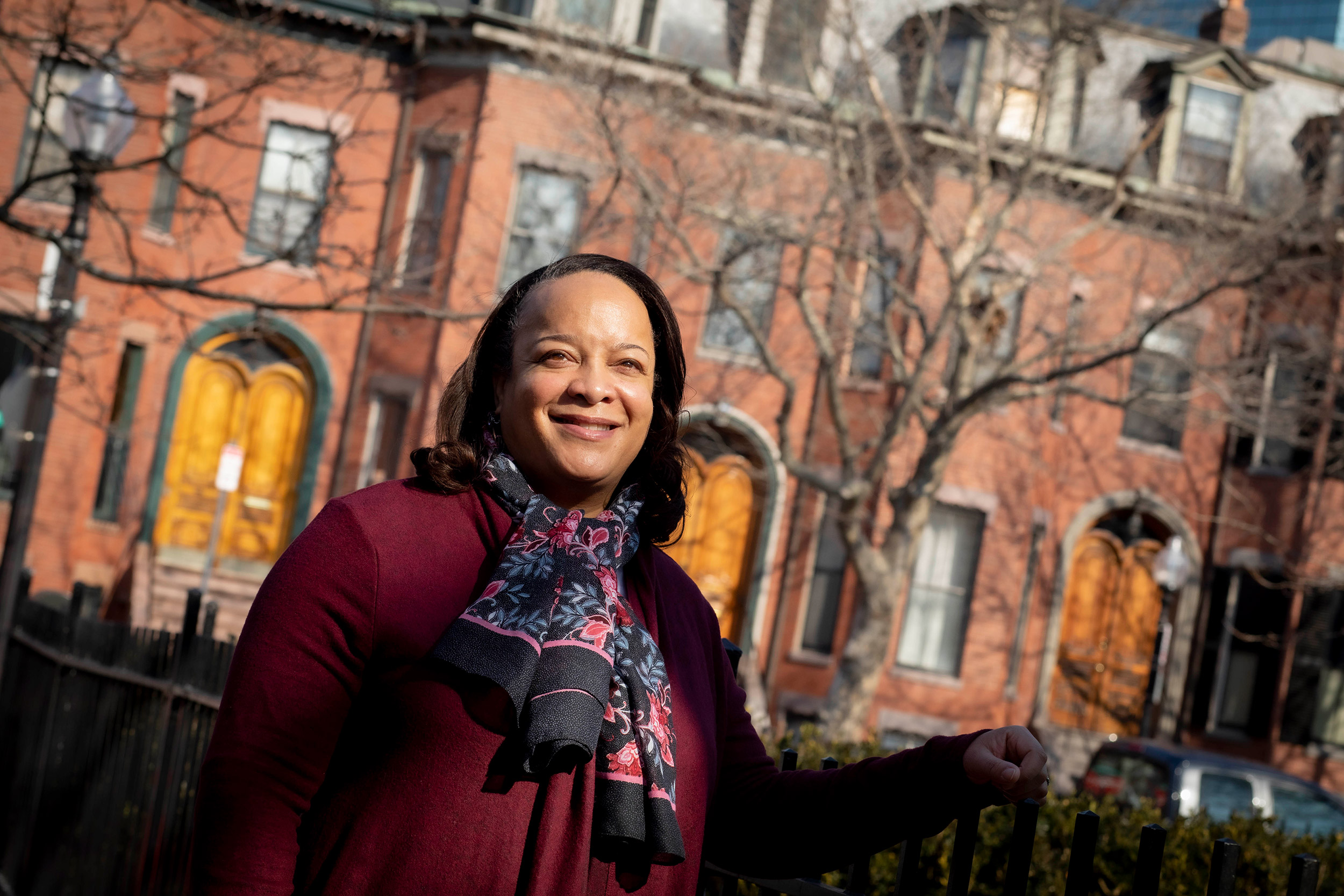
“You think about schools and academics” … but a child’s school “is social, emotional support. It’s safety. It’s the food system. It is health care,” stressed GSE Dean Bridget Long.
Rose Lincoln/Harvard file photo
This safety net has been shredded just as more students need it. “We have 400,000 deaths and those are disproportionately affecting communities of color,” said Long. “So you can imagine the kids that are in those households. Are they able to come to school and learn when they’re dealing with this trauma?”
The damage is felt by the whole families. In an upcoming paper, focusing on parents of children ages 5 to 7, Cindy H. Liu, director of Harvard Medical School’s Developmental Risk and Cultural Disparities Laboratory , looks at the effects of COVID-related stress on parent’ mental health. This stress — from both health risks and grief — “likely has ramifications for those groups who are disadvantaged, particularly in getting support, as it exacerbates existing disparities in obtaining resources,” she said via email. “The unfortunate reality is that the pandemic is limiting the tangible supports [like childcare] that parents might actually need.”
Educators are overwhelmed as well. “Teachers are doing a phenomenal job connecting with students,” Long said about their performance online. “But they’ve lost the whole system — access to counselors, access to additional staff members and support. They’ve lost access to information. One clue is that the reporting of child abuse going down. It’s not that we think that child abuse is actually going down, but because you don’t have a set of adults watching and being with kids, it’s not being reported.”
The repercussions are chilling. “As we resume in-person education on a normal basis, we’re dealing with enormous gaps,” said Reville. “Some kids will come back with such educational deficits that unless their schools have a very well thought-out and effective program to help them catch up, they will never catch up. They may actually drop out of school. The immediate consequences of learning loss and disengagement are going to be a generation of people who will be less educated.”
There is hope, however. Just as the lockdown forced teachers to improvise, accelerating forms of online learning, so too may the recovery offer options for educational reform.
The solutions, say Reville, “are going to come from our community. This is a civic problem.” He applauded one example, the Somerville, Mass., public library program of outdoor Wi-Fi “pop ups,” which allow 24/7 access either through their own or library Chromebooks. “That’s the kind of imagination we need,” he said.
On a national level, he points to the creation of so-called “Children’s Cabinets.” Already in place in 30 states, these nonpartisan groups bring together leaders at the city, town, and state levels to address children’s needs through schools, libraries, and health centers. A July 2019 “ Children’s Cabinet Toolkit ” on the Education Redesign Lab site offers guidance for communities looking to form their own, with sample mission statements from Denver, Minneapolis, and Fairfax, Va.
Already the Education Redesign Lab is working on even more wide-reaching approaches. In Tennessee, for example, the Metro Nashville Public Schools has launched an innovative program, designed to provide each student with a personalized education plan. By pairing these students with school “navigators” — including teachers, librarians, and instructional coaches — the program aims to address each student’s particular needs.
“This is a chance to change the system,” said Reville. “By and large, our school systems are organized around a factory model, a one-size-fits-all approach. That wasn’t working very well before, and it’s working less well now.”
“Students have different needs,” agreed Long. “We just have to get a better understanding of what we need to prioritize and where students are” in all aspects of their home and school lives.
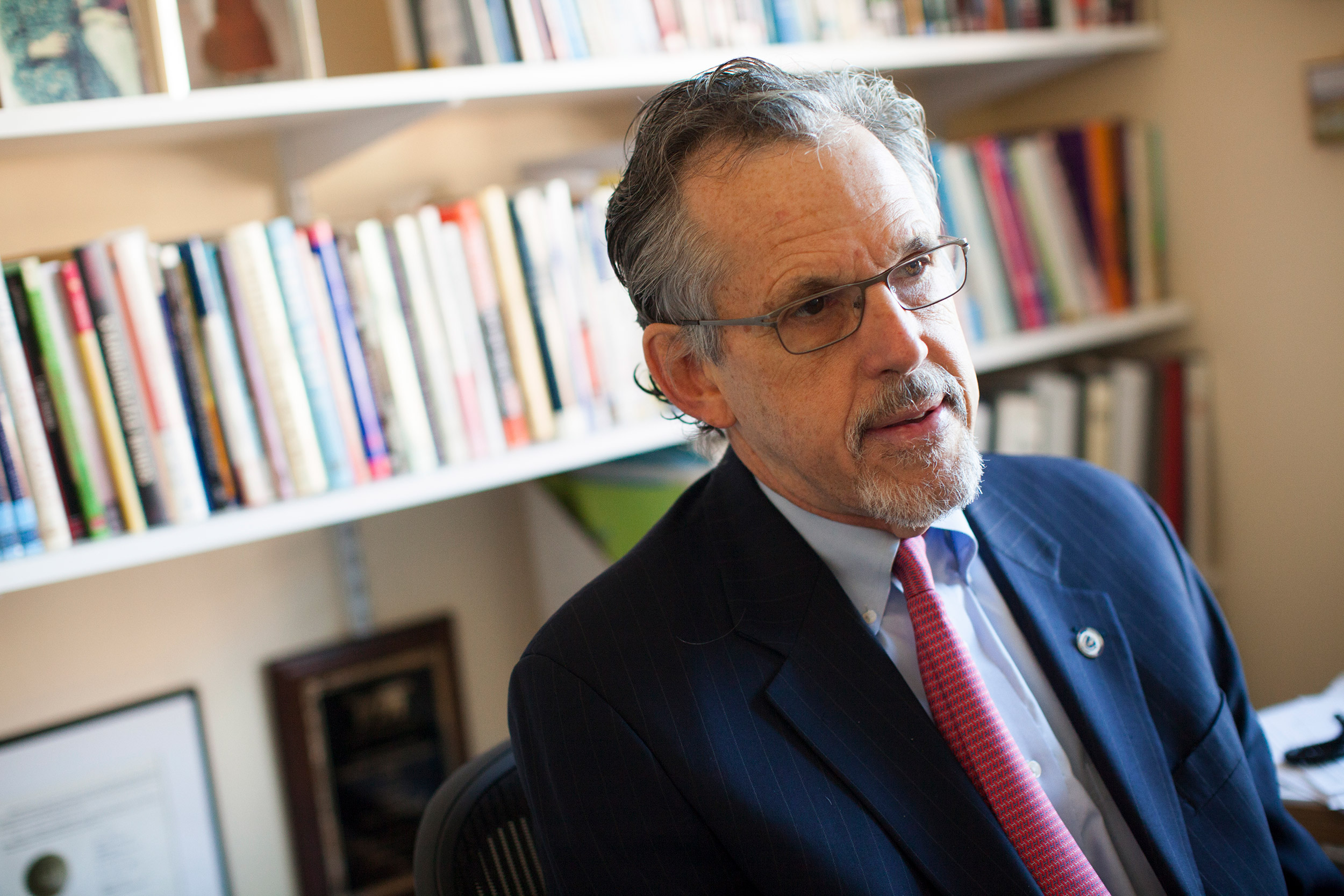
“By and large, our school systems are organized around a factory model, a one-size-fits-all approach. That wasn’t working very well before, and it’s working less well now,” says Paul Reville of the GSE.
Already, educators are discussing possible responses. Long and GSE helped create The Principals’ Network as one forum for sharing ideas, for example. With about 1,000 members, and multiple subgroups to address shared community issues, some viable answers have begun to emerge.
“We are going to need to expand learning time,” said Long. Some school systems, notably Texas’, already have begun discussing extending the school year, she said. In addition, Long, an internationally recognized economist who is a member of the National Academy of Education and the MDRC board, noted that educators are exploring innovative ways to utilize new tools like Zoom, even when classrooms reopen.
“This is an area where technology can help supplement what students are learning, giving them extra time — learning time, even tutoring time,” Long said.
Reimers, who serves on the UNESCO Commission on the Future of Education, has been brainstorming solutions that can be applied both here and abroad. These include urging wealthier countries to forgive loans, so that poorer countries do not have to cut back on basics such as education, and urging all countries to keep education a priority. The commission and its members are also helping to identify good practices and share them — globally.
Innovative uses of existing technology can also reach beyond traditional schooling. Reimers cites the work of a few former students who, working with Harvard Global Education Innovation Initiative, HundrED , the OECD Directorate for Education and Skills , and the World Bank Group Education Global Practice, focused on podcasts to reach poor students in Colombia.
They began airing their math and Spanish lessons via the WhatsApp app, which was widely accessible. “They were so humorous that within a week, everyone was listening,” said Reimers. Soon, radio stations and other platforms began airing the 10-minute lessons, reaching not only children who were not in school, but also their adult relatives.
Share this article
You might like.

Six members of Team USA train at Newell Boat House for 2024 Paralympics in Paris

Rare original copy of Jim Crow-era travel guide ‘key document in Black history’

Research suggests power, influence of watching behavior of others
Good genes are nice, but joy is better
Harvard study, almost 80 years old, has proved that embracing community helps us live longer, and be happier
Faster ‘in a dish’ model may speed up treatment for Parkinson’s
Could result in personalized models to test diagnostic and treatment strategies
Committee named to lead Legacy of Slavery memorial project
University names committee to lead Harvard & the Legacy of Slavery Memorial Project.
Breadcrumbs Section. Click here to navigate to respective pages.

Education, Inequality and Social Class
DOI link for Education, Inequality and Social Class
Get Citation
Education, Inequality and Social Class provides a comprehensive discussion of the empirical evidence for persistent inequality in educational attainment. It explores the most important theoretical perspectives that have been developed to understand class-based inequality and frame further research. With clear explanations of essential concepts, this book draws on empirical data from the UK and other countries to illustrate the nature and scale of inequalities according to social background, discussing the interactions of class-based inequalities with those according to race and gender.
The book relates aspects of inequality to the features of educational systems, showing how policy choices impact on the life chances of children from different class backgrounds. The relationship between education and social mobility is also explored, using the concepts of social closure, positionality and social congestion. The book also provides detailed discussions of the work of Pierre Bourdieu and Basil Bernstein, two important theorists whose contributions have generated thriving research traditions much used in contemporary educational research.
Education, Inequality and Social Class will be essential reading for postgraduate and advanced undergraduate students engaged in the study of education, childhood studies and sociology. It will also be of great interest to academics, researchers and teachers in training.
TABLE OF CONTENTS
Chapter 1 | 22 pages, introduction, chapter 2 | 24 pages, class in post-industrial society, chapter 3 | 22 pages, patterns of inequality in education, chapter 4 | 16 pages, structure and stratification in educational systems, chapter 5 | 18 pages, social reproduction, chapter 6 | 20 pages, cultural reproduction, chapter 7 | 23 pages, pedagogic codes, chapter 8 | 14 pages, rational action, chapter 9 | 16 pages, education and social mobility, chapter 10 | 12 pages.
- Privacy Policy
- Terms & Conditions
- Cookie Policy
- Taylor & Francis Online
- Taylor & Francis Group
- Students/Researchers
- Librarians/Institutions
Connect with us
Registered in England & Wales No. 3099067 5 Howick Place | London | SW1P 1WG © 2024 Informa UK Limited
- NONFICTION BOOKS
- BEST NONFICTION 2023
- BEST NONFICTION 2024
- Historical Biographies
- The Best Memoirs and Autobiographies
- Philosophical Biographies
- World War 2
- World History
- American History
- British History
- Chinese History
- Russian History
- Ancient History (up to 500)
- Medieval History (500-1400)
- Military History
- Art History
- Travel Books
- Ancient Philosophy
- Contemporary Philosophy
- Ethics & Moral Philosophy
- Great Philosophers
- Social & Political Philosophy
- Classical Studies
- New Science Books
- Maths & Statistics
- Popular Science
- Physics Books
- Climate Change Books
- How to Write
- English Grammar & Usage
- Books for Learning Languages
- Linguistics
- Political Ideologies
- Foreign Policy & International Relations
- American Politics
- British Politics
- Religious History Books
- Mental Health
- Neuroscience
- Child Psychology
- Film & Cinema
- Opera & Classical Music
- Behavioural Economics
- Development Economics
- Economic History
- Financial Crisis
- World Economies
- Investing Books
- Artificial Intelligence/AI Books
- Data Science Books
- Sex & Sexuality
- Death & Dying
- Food & Cooking
- Sports, Games & Hobbies
- FICTION BOOKS
- BEST NOVELS 2024
- BEST FICTION 2023
- New Literary Fiction
- World Literature
- Literary Criticism
- Literary Figures
- Classic English Literature
- American Literature
- Comics & Graphic Novels
- Fairy Tales & Mythology
- Historical Fiction
- Crime Novels
- Science Fiction
- Short Stories
- South Africa
- United States
- Arctic & Antarctica
- Afghanistan
- Myanmar (Formerly Burma)
- Netherlands
- Kids Recommend Books for Kids
- High School Teachers Recommendations
- Prizewinning Kids' Books
- Popular Series Books for Kids
- BEST BOOKS FOR KIDS (ALL AGES)
- Ages Baby-2
- Books for Teens and Young Adults
- THE BEST SCIENCE BOOKS FOR KIDS
- BEST KIDS' BOOKS OF 2023
- BEST BOOKS FOR TEENS OF 2023
- Best Audiobooks for Kids
- Environment
- Best Books for Teens of 2023
- Best Kids' Books of 2023
- Political Novels
- New History Books
- New Historical Fiction
- New Biography
- New Memoirs
- New World Literature
- New Economics Books
- New Climate Books
- New Math Books
- New Philosophy Books
- New Psychology Books
- New Physics Books
- THE BEST AUDIOBOOKS
- Actors Read Great Books
- Books Narrated by Their Authors
- Best Audiobook Thrillers
- Best History Audiobooks
- Nobel Literature Prize
- Booker Prize (fiction)
- Baillie Gifford Prize (nonfiction)
- Financial Times (nonfiction)
- Wolfson Prize (history)
- Royal Society (science)
- Pushkin House Prize (Russia)
- Walter Scott Prize (historical fiction)
- Arthur C Clarke Prize (sci fi)
- The Hugos (sci fi & fantasy)
- Audie Awards (audiobooks)
Make Your Own List
Nonfiction Books » Economics Books » Inequality Books
The best books on inequality, recommended by daron acemoglu.
The US, the UK and many other countries around the globe have become far less equal over the past 30 years. It's important we understand how and why this happened, and what it means for our societies, says Daron Acemoglu , a professor of economics at MIT. He recommends the best books to get a better understanding of inequality.
Interview by Sophie Roell , Editor

The Race between Education and Technology by Claudia Goldin and Lawrence F Katz
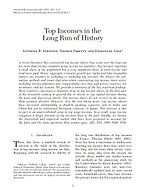
Top Incomes in the Long Run of History by Emmanuel Saez, Thomas Piketty & Tony Atkinson
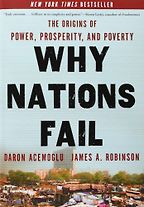
Why Nations Fail by Daron Acemoglu and James Robinson
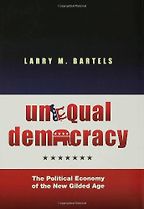
Unequal Democracy by Larry M Bartels
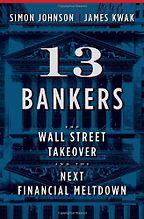
13 Bankers by Simon Johnson & Simon Johnson and James Kwak
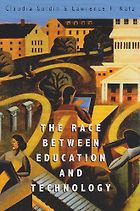
1 The Race between Education and Technology by Claudia Goldin and Lawrence F Katz
2 top incomes in the long run of history by emmanuel saez, thomas piketty & tony atkinson, 3 why nations fail by daron acemoglu and james robinson, 4 unequal democracy by larry m bartels, 5 13 bankers by simon johnson & simon johnson and james kwak.
B efore we get to the books, inequality is in the news a lot right now. How should we be thinking about it and trying to get our heads around it?
What’s the economist’s view?
The default position of economists is that inequality reflects the unequal human capital or productive capabilities of different workers. If you start with that premise – that what people earn is commensurate with their contribution to their employer, and also perhaps to society – then greater inequality tells you something about how people’s productivities have evolved over time. This is by no means what every economist believes, but it’s a common view. Economists have cut their teeth on inequality by looking at things like the increase in the college premium over the last 30 years in the US and other economies, as well as the increase in the gap between relatively high earners – the 90th percentile of income distribution – versus the bottom 10th percentile. We’ve seen a big increase in inequality, measured in various ways, and this reflects the fact that the top people, the more educated, high earners have become more skilled. Technology has favoured them, globalisation has favoured them, and inequality has increased for that reason.
So if a CEO is earning $5 million a year, that’s because he deserves that $5 million?
That’s why I put emphasis on the 90th versus the 10th percentile, because once you get to that very high level, the story becomes a little harder to swallow. Economists have, for the most part, not focused on the CEOs for two reasons. This is changing, but one reason is that most of the publicly available data sources don’t have information on CEOs. That’s because there are not that many CEOs, or multimillionaires. So when you take a sample – for example, a 1% sample of all the US households – you’re not going to get many of them. Secondly, data are top coded. You don’t actually see people’s exact earnings. You see that they are at the very top, which might be $250,000, but you don’t see if they’re making $25 million. For that reason, a lot of the labour economics literature has focused on things like, do people with college degrees earn more than high school graduates? Do postgraduates earn more? What has happened to earnings inequality among lawyers or doctors or among production workers?
What do non-economists think, in your view?
My caricature of a layman’s view is that inequality is an indication of something that is failing in society. If a group of people used to earn twice as much as another group of people, and then, over 20 years, that ratio increases to four, that’s something that is concerning and might indicate a failure of social policy. My own view is a mixture of the two. If you’re looking at the average college graduate versus the average high school graduate, or the 90th versus the 10th percentile, then the things economists have emphasised – technology , globalisation, offshoring and outsourcing, changes in the supply of skills, et cetera – have played a major role and probably tell the bulk of the story. But if you want to understand the top inequality, why the top 0.1% – even more than what the 1% Occupy Wall Streeters are talking about – have been earning such huge amounts, then really you have to think about the social policy aspects of it and the politics of it. There is perhaps some sort of failure in how our system is working.
In terms of the actual figures, how bad is inequality in the US and, say, the UK?
Based on the work of Thomas Piketty and Emmanuel Saez, if you look from the 1950s up to the end of the 1970s, the share of total national income in the US earned by the richest 1% was about 10%. If you look at the 2000s, it’s well over 20%. It rose up to nearly 25% and then came down. In the UK it’s at about 15%, up from 7% or so. The trend towards inequality over the last 50 years has been very similar in the Anglo-Saxon economies, though it’s important to say that it’s not just an Anglo-Saxon phenomenon. There are similar trends in many economies, though there are a few that haven’t experienced it to any notable extent.
Finland and Sweden. Even there, there’s been an increase in the top percentile share – which is not so surprising, given they have many multinational companies where the CEOs make a lot of money – but the increase is much less pronounced. The share of the national income that the top one percentile captures is significantly lower.
One table that‘s been making the rounds on Facebook is a comparison between CEO and worker salary. For example, in Japan the ratio is 11 to one, in Germany it’s 12 to one, but in the US it’s 475 to one. Does that sound right to you?
I don’t know the numbers off the top of my head, and it would depend on which CEOs you include in the list. But in the US the ratio of CEO to worker pay is very, very high. If you look at the average pay of Fortune 500 companies, it would be more than 200 times the salary of the average US worker. This is certainly higher than what the comparable numbers would be in most other countries.
I never know whether to trust figures like that, when you don’t really know where they come from.
Let’s go through your inequality books. Your first choice is The Race between Education and Technology, published by Harvard University Press. You mentioned in an earlier email to me that it is “a must-read for anyone interested in inequality”. Tell me more.
This is a really wonderful book. It gives a masterful outline of the standard economic model, where earnings are proportional to contribution, or to productivity. It highlights in a very clear manner what determines the productivities of different individuals and different groups. It takes its cue from a phrase that the famous Dutch economist, Jan Tinbergen coined. The key idea is that technological changes often increase the demand for more skilled workers, so in order to keep inequality in check you need to have a steady increase in the supply of skilled workers in the economy. He called this “the race between education and technology”. If the race is won by technology, inequality tends to increase, if the race is won by education, inequality tends to decrease.
The authors, Claudia Goldin and Larry Katz, show that this is actually a pretty good model in terms of explaining the last 100 years or so of US history. They give an excellent historical account of how the US education system was formed and why it was very progressive, leading to a very large increase in the supply of educated workers, in the first half of the century. This created greater equality in the US than in many other parts of the world.
They also point to three things that have changed that picture over the last 30 to 40 years. One is that technology has become even more biased towards more skilled, higher earning workers than before. So, all else being equal, that will tend to increase inequality. Secondly, we’ve been going through a phase of globalisation. Things such as trading with China – where low-skill labour is much cheaper – are putting pressure on low wages. Third, and possibly most important, is that the US education system has been failing terribly at some level. We haven’t been able to increase the share of our youth that completes college or high school. It’s really remarkable, and most people wouldn’t actually guess this, but in the US, the cohorts that had the highest high-school graduation rates were the ones that were graduating in the middle of the 1960s. Our high-school graduation rate has actually been declining since then. If you look at college, it’s the same thing. This is hugely important, and it’s really quite shocking. It has a major effect on inequality, because it is making skills much more scarce then they should be.
Do Goldin and Katz go into the reasons why education is failing in the US?
They do discuss it, but nobody knows. It’s not a monocausal, simple story. It’s not that we’re spending less. In fact, we are spending more. It’s certainly not that college is not valued, it’s valued a lot. The college premium – what college graduates earn relative to high-school graduates – has been increasing rapidly. It’s not that the US is not investing enough in low-income schools. There has been a lot of investment in low-income schools. Not just free lunches, but lots of grants and other forms of spending from both states and the federal government.
So there’s no easy solution?
No, there is no easy solution. But it is important that this becomes a top priority. There are many things that can be done. Reforming schools and spending more on schools are not silver bullets, but they will certainly help.
It’s ironic, when the US has the best universities in the world. You’re Turkish, but you’re here. Lots of foreigners have ended up here precisely because of the education system.
OK, so let’s go on to the inequality article you’ve chosen, “ Top Incomes in the Long-Run of History ” by three European economists, Anthony Atkinson, Thomas Piketty and Emmanuel Saez.
What’s missing from the Goldin and Katz book is that they really don’t look at all at what’s going on in the top 10%. That’s a very important part of the story, and one that requires more attention. Some very interesting things have been going on in the top 10%, and especially the top 1%. Atkinson, Piketty and Saez have really been pioneers in this and this article is an overview of much of their research. What the paper shows is that concurrent with the increase in the college premium and inequality between a median worker and a worker at the bottom, there has been an even sharper increase in the share of the top 10% and top 1% in national income in the US, Canada, UK and so on.
What’s important about this paper – is it the figures, or the explanations they give?
For me, it’s more relevant for the figures, to know what’s been going on. Occupy Wall Street has brought the 1% to the attention of the wider public, but it was Atkinson, Piketty and Saez who brought it to the attention of the academic community over the last decade. But it’s definitely worth reading their explanations, because some of the things they say are important. For example, they emphasise that it’s very difficult to account for these figures with the standard labour supply, labour demand explanation that Goldin and Katz emphasise. That’s not going to work, and we really have to think about things like social policies, progressive taxation and the politics of it.
So they’re looking at 20 countries over 100-plus years, and according to the summary their key empirical finding is that “most countries experience a dramatic drop in top income shares in the first part of the 20th century… However, over the last 30 years, top income shares have increased substantially in English-speaking countries and in India and China, but not in continental European countries or Japan.”
Yes, this pattern is very remarkable and the Anglo-Saxons have led it. You also see it in many other countries, including France, Italy, Spain and so on, but it’s not as pronounced as in the Anglo-Saxons. It is also important to note that this U-shape applies to the picture that emerges from non-top inequality as well, such as 90th percentile vs 10th percentile or the college premium. For example, Goldin and Katz’s book shows that the college premium was higher in the early 1900s than it was in the 1940s and 1950s. Then it remains stable for several decades, and then it starts increasing again in the 1980s.
When it refers to top income, are they focusing on the top 1% or top 10%?
They use the data from the tax records, so they have data on the top 10%, the top 1%, the top 0.1% and so on. The two they choose to focus on are the top 10% and, especially, the top 1%. Sometimes they even give numbers for the top 0.1%. There you really see striking differences between countries. If you look at the 0.1%, it accounts for almost 8% of national income in the US, when in many countries it’s more like 1% or 2%. It’s also increased dramatically in the US – in the 1950s it was about 3%.
One of the things they point out is that top income shares in the US and the UK started to increase during the Reagan and Thatcher administrations. Isn’t rising inequality just the result of Reagan and Thatcher reducing taxes on the rich?
OK, so to get more of a sense of your own view, let’s talk about your inequality book, Why Nations Fail: The Origins of Power, Prosperity and Poverty .
In terms of understanding this top inequality, I mentioned the possibility that it might be about politics. How should we think about politics? What are the levers of politics? For that we need a conceptual framework and that’s what this book tries to provide. It’s co-authored with my long-term collaborator and friend Jim Robinson – and it’s not about US or UK or Canadian inequality. It runs through several thousand years of history, and tries to explain how societies work and why, often, they fail to generate prosperity for their citizens. It’s a very political story.
At the centre of our framework is the tension between people who have political power and how they can use that power for their own interests and against the interests of the rest of the society. We don’t live in a zero-sum world – and there is a lot of prosperity-creating capability that many societies have exploited – but there are also some zero-sum aspects. Often there will be tensions within society, about who is going to get the biggest slice, and people will try to manipulate the entire fabric of our institutions in order to get that slice. So that’s the narrative we develop for understanding how societies have developed their institutions. The absolutist institutions created a very unequal distribution of political power and a very unequal distribution of economic gains in society and the two became synergistic – the very unequal distribution of political power locked in a very unequal distribution of economics gains. This created a vicious circle, but the conflict it engendered sometimes led to a breaking down of the institutions that this unequal distribution depended on, opening the way for more open institutions, which are one of the engines of prosperity.
The last part of the book is the converse story, which is how these inclusive institutions, which create a more equitable distribution of political power and so a more level playing field, are going to be constantly challenged. These inclusive institutions don’t guarantee that everything is going to be equally distributed but will at least prevent the most egregious and unfair distribution of resources. They also ensure a more equal distribution of political power in society. But there is no guarantee that they will last for ever. If you are able to garner a little more support, and a little more political power, the danger that you can start tweaking these institutions to your benefit is always present. There are continuous challenges to the inclusive nature of political institutions. So in this framework you can see the threat of the increased inequality in the US as a symptom of the sorts of challenges to the fairly inclusive set of institutions that the US has had for over 200 years.
In short, you can’t be complacent about your political institutions just because they’ve worked well up to now?
No, and we give examples of how other societies have seen about-faces in their institutions. For example, Venice. It started with unparalleled inclusive institutions for its time, and then went through a process whereby these institutions became more and more controlled by a smaller clique and ultimately reversed the progress that Venice had made.
So you think the relative prosperity of a nation is not to do with its geography, climate or culture, but with its political system?
Oh yes. I never thought that that was a very controversial point of view, but it is, I know. We are conditioned to think of factors such as culture and geography as so determining because we see them as immutable. They’re there and therefore they must be important. How could it not be important that Mexico City is so much warmer than New York? How could it not be important that some people are Muslim and others are Christian? But actually none of it is really as obvious as it appears. In early chapters, we document how many parts of the world that are very prosperous today were relatively backward at the time Europeans arrived to colonise them. Yet places like Mexico or Peru were then among the most civilised and developed. It was the set of political and economics institutions that were differentially imposed on these places that led to a reversal and a divergence. The same thing is true for cultural and religious values. The association between these and economic outcomes has not been immutable. Often they are consequences of the different political histories that these places have endured.
So is a society that is more equal always better and more prosperous?
There are three different concepts here. One is equality of political power. The second is equality of opportunity, and the third is equality of economic outcome. It would be a very inefficient society if we imposed equality of economic outcomes, because the engines that create prosperity do require individuals to have property rights, to have incentives, so that they put in effort, work hard and invest. That will inevitably be associated with inequality, but if you try to stop that inequality it will create lots of inefficiencies and probably choke prosperity.
To give you an example, taxing software entrepreneurs would definitely not be the best way of trying to encourage the technological leadership that the US has. But it’s different when you’re talking about equality of opportunity. If you don’t have equality of opportunity, it’s going to create not only an unfair society but also one that doesn’t deploy its resources in the best way. Going back to the software example, if you want to increase the technological ingenuity of the US, what you want to do is to provide a platform that gives an opportunity for the best minds to actually be able to choose the occupation that they want. And when that’s software, that’s going to create better innovations in software.
Get the weekly Five Books newsletter
Even more important is equality of political power. When political power is very unequally distributed, it will inevitably be the case that those who have the political power will start using it to create a non-level playing field for themselves. They will try to use that political power to dispossess the rest and grab stuff that benefits them and harms society.
And you think that’s where we’ve got to in the US?
Yes. The real worry is that as inequality has increased in the US, and perhaps because the nature of our political system has changed for other reasons, money has started becoming much more important in politics. Politicians have become much more responsive to the wishes and the views and the voice of the very wealthy. That’s what Larry Bartels’s book, Unequal Democracy , is about. There are parts of it that you may agree with, there are parts of it you may not agree with, but I think it paints a very alarming picture of how our democracy has become much more unequal.
So elected officials don’t much listen as much to ordinary Americans as they do to rich people?
Exactly. And do we know that for sure? No. But I think Larry Bartels has provided enough suggestive evidence and there are lots of other case studies and anecdotal evidence that suggests that that is true. What is the cause? We know that much less well. Certainly some of it is because of lobbying and campaign contributions, but I’m not sure all of it is because of that. Some of it is because we have this image of being a meritocracy and American society respects the views of the very successful. The politicians like to hang out with the successful; they get their advice from the successful.
Jeff Sachs was giving a talk in Manhattan the other night about his new book, The Price of Civilization . He was spitting blood that Obama was in town again, not for constructive reasons, but to attend yet another fundraiser on the Upper East Side. Inevitably, rich people are going to have more influence when every politician from the president down constantly needs money from them.
They constantly need money, they like talking to them, they respect their opinion. Jeff Sachs and I have had many differences but in this case I fully agree with him.
That’s what’s interesting about Occupy Wall Street. Its supporters aren’t just crazy lefties who don’t believe in free markets, but respected economists.
So your last inequality book, 13 Bankers , is by Simon Johnson, the former chief economist of the IMF, and James Kwak. They argue that in spite of the role they played in the financial crisis, the big banks have grown bigger, more profitable and more resistant to regulation than ever.
This inequality book documents how powerful the financial services industry has become, precisely on the issues the financial industry has a stake in. Because whenever you have any problems with finance or the macro-economy or the stock markets, what do the Fed officials do, and what do the Treasury officials do? They call the bankers.
We were talking about how the US has become more unequal and political power more unequally distributed. This is a two-way process – as the rich become richer they have more respect from us, their voices are heard more, they have more money to spend on campaign contributions and lobbying, and they become more powerful. That enables them to rig the game in their favour, by getting rid of regulation, by reducing their tax rates, by getting subsidies for their businesses and so on. That’s the big picture.
The finance industry is the best exhibit for that story, and 13 Bankers tells that story wonderfully. It shows how the finance industry became what it is, not because of its genius – though obviously there were some very smart people – but because, politically, we got rid of some regulations. We also allowed banks to make huge profits through a system in which there were implicit government guarantees for their risk-taking. Then, after the financial crisis came, the finance industry was politically powerful enough that it actually prevented any sort of radical reform. On the contrary, the most important major banks became bigger and continued to dominate the economy, and the share of the largest seven banks has actually increased significantly since 2006.
I lay a lot of blame for inequality on greed, corporate greed.
No, I don’t blame greed. Everybody is greedy to some degree. Greed is part of human nature and you can’t blame human nature! The key is to have institutions that make sure that the human urges that we have are channelled in the right direction. We want people to be ambitious. We don’t want to say that Steve Jobs shouldn’t have been ambitious. He was ambitious and he was greedy and that was a good thing, because his greed and ambition were channelled in a creative way. The problem is that in society over the last 20 years – and Wall Street is a poster child of this – we have created a platform where the ambition and greed of people, often men, has been channelled in a very anti-social, selfish and socially destructive direction. The risk-taking that for Steve Jobs and Bill Gates led to innovation has led to exploitative behaviour and risk-taking at the expense of the government and poor people for the Wall Street bankers. What’s to blame are the institutions. We have let our institutions fail.
What’s the solution?
This is a political problem and the solution is also political. What I mean is that we have to make sure that the political institutions in the US have the same resilience that they showed at the turn of the century, during the Gilded Age. At that time we had a situation where a small fraction of the population was very wealthy, and extremely powerful. Money in politics was everywhere. But, in the end, there was a progressive movement. It was a populist movement that became part of the mainstream political parties, both Republican and Democrat. It led to Teddy Roosevelt and Taft and Wilson taking action – passing laws against trusts, against the financial industry, against the role of money in politics. It really changed the picture. That was an instance when there was a significant challenge to the inclusive institutions in the US, and the institutions proved resilient. We have to do the same thing now. It cannot be something we dream up in our ivory towers – it’s something that the American people have to take part in. It has to be a grassroots movement. Will it be Occupy Wall Street? No, I don’t think so. But it’s still important because it’s indicative of how a grassroots movement can develop, and it’s already articulating what many people feel is unfair and wrong about the political system. At the moment, the political parties are not really listening, but I am an optimist. Perhaps in the next few years, there will be more openness to their complaints, and the political system can self-regulate itself.
Isn’t part of the problem that US voters vote on the basis of cultural issues like abortion and gay marriage, and against their economic interests?
There is some of that. The Thomas Frank book, What’s the Matter with Kansas? is about that. In some ways, it’s the opposite of the Larry Bartels inequality book. There is truth to both of them. But the Larry Bartels narrative appeals much more to me. It’s not that people are so stupid as to be systematically voting against their interests – it’s just that once the political system becomes so unresponsive to what’s going on at the bottom, then whatever the bottom votes for or wishes is not so important. At that point, perhaps they are more likely to vote on the basis of secondary concerns.
September 14, 2017
Five Books aims to keep its book recommendations and interviews up to date. If you are the interviewee and would like to update your choice of books (or even just what you say about them) please email us at [email protected]
Support Five Books
Five Books interviews are expensive to produce. If you've enjoyed this interview, please support us by donating a small amount .
Daron Acemoglu
Daron Acemoglu is the Elizabeth and James Killian Professor of Economics at the Massachusetts Institute of Technology. In 2005 he won the prestigious John Bates Clark medal, awarded to the best economist under 40.
We ask experts to recommend the five best books in their subject and explain their selection in an interview.
This site has an archive of more than one thousand seven hundred interviews, or eight thousand book recommendations. We publish at least two new interviews per week.
Five Books participates in the Amazon Associate program and earns money from qualifying purchases.
© Five Books 2024
Unequal Opportunity: Race and Education
Subscribe to governance weekly, linda darling-hammond ld linda darling-hammond.
March 1, 1998
- 13 min read
W.E.B. DuBois was right about the problem of the 21st century. The color line divides us still. In recent years, the most visible evidence of this in the public policy arena has been the persistent attack on affirmative action in higher education and employment. From the perspective of many Americans who believe that the vestiges of discrimination have disappeared, affirmative action now provides an unfair advantage to minorities. From the perspective of others who daily experience the consequences of ongoing discrimination, affirmative action is needed to protect opportunities likely to evaporate if an affirmative obligation to act fairly does not exist. And for Americans of all backgrounds, the allocation of opportunity in a society that is becoming ever more dependent on knowledge and education is a source of great anxiety and concern.
At the center of these debates are interpretations of the gaps in educational achievement between white and non-Asian minority students as measured by standardized test scores. The presumption that guides much of the conversation is that equal opportunity now exists; therefore, continued low levels of achievement on the part of minority students must be a function of genes, culture, or a lack of effort and will (see, for example, Richard Herrnstein and Charles Murray’s The Bell Curve and Stephan and Abigail Thernstrom’s America in Black and White).
The assumptions that undergird this debate miss an important reality: educational outcomes for minority children are much more a function of their unequal access to key educational resources, including skilled teachers and quality curriculum, than they are a function of race. In fact, the U.S. educational system is one of the most unequal in the industrialized world, and students routinely receive dramatically different learning opportunities based on their social status. In contrast to European and Asian nations that fund schools centrally and equally, the wealthiest 10 percent of U.S. school districts spend nearly 10 times more than the poorest 10 percent, and spending ratios of 3 to 1 are common within states. Despite stark differences in funding, teacher quality, curriculum, and class sizes, the prevailing view is that if students do not achieve, it is their own fault. If we are ever to get beyond the problem of the color line, we must confront and address these inequalities.
The Nature of Educational Inequality
Americans often forget that as late as the 1960s most African-American, Latino, and Native American students were educated in wholly segregated schools funded at rates many times lower than those serving whites and were excluded from many higher education institutions entirely. The end of legal segregation followed by efforts to equalize spending since 1970 has made a substantial difference for student achievement. On every major national test, including the National Assessment of Educational Progress, the gap in minority and white students’ test scores narrowed substantially between 1970 and 1990, especially for elementary school students. On the Scholastic Aptitude Test (SAT), the scores of African-American students climbed 54 points between 1976 and 1994, while those of white students remained stable.
Related Books
Tom Loveless
October 22, 2000
Dick Startz
January 15, 2019
Michael Hansen, Diana Quintero
July 10, 2018
Even so, educational experiences for minority students have continued to be substantially separate and unequal. Two-thirds of minority students still attend schools that are predominantly minority, most of them located in central cities and funded well below those in neighboring suburban districts. Recent analyses of data prepared for school finance cases in Alabama, New Jersey, New York, Louisiana, and Texas have found that on every tangible measure—from qualified teachers to curriculum offerings—schools serving greater numbers of students of color had significantly fewer resources than schools serving mostly white students. As William L. Taylor and Dianne Piche noted in a 1991 report to Congress: Inequitable systems of school finance inflict disproportionate harm on minority and economically disadvantaged students. On an inter-state basis, such students are concentrated in states, primarily in the South, that have the lowest capacities to finance public education. On an intra-state basis, many of the states with the widest disparities in educational expenditures are large industrial states. In these states, many minorities and economically disadvantaged students are located in property-poor urban districts which fare the worst in educational expenditures (or) in rural districts which suffer from fiscal inequity.
Jonathan Kozol s 1991 Savage Inequalities described the striking differences between public schools serving students of color in urban settings and their suburban counterparts, which typically spend twice as much per student for populations with many fewer special needs. Contrast MacKenzie High School in Detroit, where word processing courses are taught without word processors because the school cannot afford them, or East St. Louis Senior High School, whose biology lab has no laboratory tables or usable dissecting kits, with nearby suburban schools where children enjoy a computer hookup to Dow Jones to study stock transactions and science laboratories that rival those in some industries. Or contrast Paterson, New Jersey, which could not afford the qualified teachers needed to offer foreign language courses to most high school students, with Princeton, where foreign languages begin in elementary school.
Even within urban school districts, schools with high concentrations of low-income and minority students receive fewer instructional resources than others. And tracking systems exacerbate these inequalities by segregating many low-income and minority students within schools. In combination, these policies leave minority students with fewer and lower-quality books, curriculum materials, laboratories, and computers; significantly larger class sizes; less qualified and experienced teachers; and less access to high-quality curriculum. Many schools serving low-income and minority students do not even offer the math and science courses needed for college, and they provide lower-quality teaching in the classes they do offer. It all adds up.
What Difference Does it Make?
Since the 1966 Coleman report, Equality of Educational Opportunity, another debate has waged as to whether money makes a difference to educational outcomes. It is certainly possible to spend money ineffectively; however, studies that have developed more sophisticated measures of schooling show how money, properly spent, makes a difference. Over the past 30 years, a large body of research has shown that four factors consistently influence student achievement: all else equal, students perform better if they are educated in smaller schools where they are well known (300 to 500 students is optimal), have smaller class sizes (especially at the elementary level), receive a challenging curriculum, and have more highly qualified teachers.
Minority students are much less likely than white children to have any of these resources. In predominantly minority schools, which most students of color attend, schools are large (on average, more than twice as large as predominantly white schools and reaching 3,000 students or more in most cities); on average, class sizes are 15 percent larger overall (80 percent larger for non-special education classes); curriculum offerings and materials are lower in quality; and teachers are much less qualified in terms of levels of education, certification, and training in the fields they teach. And in integrated schools, as UCLA professor Jeannie Oakes described in the 1980s and Harvard professor Gary Orfield’s research has recently confirmed, most minority students are segregated in lower-track classes with larger class sizes, less qualified teachers, and lower-quality curriculum.
Research shows that teachers’ preparation makes a tremendous difference to children’s learning. In an analysis of 900 Texas school districts, Harvard economist Ronald Ferguson found that teachers’ expertise—as measured by scores on a licensing examination, master’s degrees, and experienc—was the single most important determinant of student achievement, accounting for roughly 40 percent of the measured variance in students’ reading and math achievement gains in grades 1-12. After controlling for socioeconomic status, the large disparities in achievement between black and white students were almost entirely due to differences in the qualifications of their teachers. In combination, differences in teacher expertise and class sizes accounted for as much of the measured variance in achievement as did student and family background (figure 1).
Ferguson and Duke economist Helen Ladd repeated this analysis in Alabama and again found sizable influences of teacher qualifications and smaller class sizes on achievement gains in math and reading. They found that more of the difference between the high- and low-scoring districts was explained by teacher qualifications and class sizes than by poverty, race, and parent education.
Meanwhile, a Tennessee study found that elementary school students who are assigned to ineffective teachers for three years in a row score nearly 50 percentile points lower on achievement tests than those assigned to highly effective teachers over the same period. Strikingly, minority students are about half as likely to be assigned to the most effective teachers and twice as likely to be assigned to the least effective.
Minority students are put at greatest risk by the American tradition of allowing enormous variation in the qualifications of teachers. The National Commission on Teaching and America’s Future found that new teachers hired without meeting certification standards (25 percent of all new teachers) are usually assigned to teach the most disadvantaged students in low-income and high-minority schools, while the most highly educated new teachers are hired largely by wealthier schools (figure 2). Students in poor or predominantly minority schools are much less likely to have teachers who are fully qualified or hold higher-level degrees. In schools with the highest minority enrollments, for example, students have less than a 50 percent chance of getting a math or science teacher with a license and a degree in the field. In 1994, fully one-third of teachers in high-poverty schools taught without a minor in their main field and nearly 70 percent taught without a minor in their secondary teaching field.
Studies of underprepared teachers consistently find that they are less effective with students and that they have difficulty with curriculum development, classroom management, student motivation, and teaching strategies. With little knowledge about how children grow, learn, and develop, or about what to do to support their learning, these teachers are less likely to understand students’ learning styles and differences, to anticipate students’ knowledge and potential difficulties, or to plan and redirect instruction to meet students’ needs. Nor are they likely to see it as their job to do so, often blaming the students if their teaching is not successful.
Teacher expertise and curriculum quality are interrelated, because a challenging curriculum requires an expert teacher. Research has found that both students and teachers are tracked: that is, the most expert teachers teach the most demanding courses to the most advantaged students, while lower-track students assigned to less able teachers receive lower-quality teaching and less demanding material. Assignment to tracks is also related to race: even when grades and test scores are comparable, black students are more likely to be assigned to lower-track, nonacademic classes.
When Opportunity Is More Equal
What happens when students of color do get access to more equal opportunities’ Studies find that curriculum quality and teacher skill make more difference to educational outcomes than the initial test scores or racial backgrounds of students. Analyses of national data from both the High School and Beyond Surveys and the National Educational Longitudinal Surveys have demonstrated that, while there are dramatic differences among students of various racial and ethnic groups in course-taking in such areas as math, science, and foreign language, for students with similar course-taking records, achievement test score differences by race or ethnicity narrow substantially.
Robert Dreeben and colleagues at the University of Chicago conducted a long line of studies documenting both the relationship between educational opportunities and student performance and minority students’ access to those opportunities. In a comparative study of 300 Chicago first graders, for example, Dreeben found that African-American and white students who had comparable instruction achieved comparable levels of reading skill. But he also found that the quality of instruction given African-American students was, on average, much lower than that given white students, thus creating a racial gap in aggregate achievement at the end of first grade. In fact, the highest-ability group in Dreeben’s sample was in a school in a low-income African-American neighborhood. These children, though, learned less during first grade than their white counterparts because their teacher was unable to provide the challenging instruction they deserved.
When schools have radically different teaching forces, the effects can be profound. For example, when Eleanor Armour-Thomas and colleagues compared a group of exceptionally effective elementary schools with a group of low-achieving schools with similar demographic characteristics in New York City, roughly 90 percent of the variance in student reading and mathematics scores at grades 3, 6, and 8 was a function of differences in teacher qualifications. The schools with highly qualified teachers serving large numbers of minority and low-income students performed as well as much more advantaged schools.
Most studies have estimated effects statistically. However, an experiment that randomly assigned seventh grade “at-risk”students to remedial, average, and honors mathematics classes found that the at-risk students who took the honors class offering a pre-algebra curriculum ultimately outperformed all other students of similar backgrounds. Another study compared African-American high school youth randomly placed in public housing in the Chicago suburbs with city-placed peers of equivalent income and initial academic attainment and found that the suburban students, who attended largely white and better-funded schools, were substantially more likely to take challenging courses, perform well academically, graduate on time, attend college, and find good jobs.
What Can Be Done?
This state of affairs is not inevitable. Last year the National Commission on Teaching and America’s Future issued a blueprint for a comprehensive set of policies to ensure a “caring, competent, and qualified teacher for every child,” as well as schools organized to support student success. Twelve states are now working directly with the commission on this agenda, and others are set to join this year. Several pending bills to overhaul the federal Higher Education Act would ensure that highly qualified teachers are recruited and prepared for students in all schools. Federal policymakers can develop incentives, as they have in medicine, to guarantee well-prepared teachers in shortage fields and high-need locations. States can equalize education spending, enforce higher teaching standards, and reduce teacher shortages, as Connecticut, Kentucky, Minnesota, and North Carolina have already done. School districts can reallocate resources from administrative superstructures and special add-on programs to support better-educated teachers who offer a challenging curriculum in smaller schools and classes, as restructured schools as far apart as New York and San Diego have done. These schools, in communities where children are normally written off to lives of poverty, welfare dependency, or incarceration, already produce much higher levels of achievement for students of color, sending more than 90 percent of their students to college. Focusing on what matters most can make a real difference in what children have the opportunity to learn. This, in turn, makes a difference in what communities can accomplish.
An Entitlement to Good Teaching
The common presumption about educational inequality—that it resides primarily in those students who come to school with inadequate capacities to benefit from what the school has to offer—continues to hold wide currency because the extent of inequality in opportunities to learn is largely unknown. We do not currently operate schools on the presumption that students might be entitled to decent teaching and schooling as a matter of course. In fact, some state and local defendants have countered school finance and desegregation cases with assertions that such remedies are not required unless it can be proven that they will produce equal outcomes. Such arguments against equalizing opportunities to learn have made good on DuBois’s prediction that the problem of the 20th century would be the problem of the color line.
But education resources do make a difference, particularly when funds are used to purchase well-qualified teachers and high-quality curriculum and to create personalized learning communities in which children are well known. In all of the current sturm und drang about affirmative action, “special treatment,” and the other high-volatility buzzwords for race and class politics in this nation, I would offer a simple starting point for the next century s efforts: no special programs, just equal educational opportunity.
Governance Studies
August 20, 2024
Andrew J. Seligsohn, Rebecca Silliman
August 19, 2024
Online only
9:30 am - 11:00 am EDT

IMAGES
COMMENTS
This book delves deep into the systems for preparing, developing and supporting teachers in countries like Singapore and Finland. Then, it gives teachers actionable ways to emulate these systems so that students of all backgrounds and abilities have equal opportunities for success. 2. Education Inequality: Closing the Gap.
This book is a history of educational inequality in the Chicago metropolitan area from the end of WWII to the early 21st century, including how it was constructed, contested, and naturalized through public policy. Educational inequality helped structure and shape other kinds of racial and socioeconomic inequality across time and space.
There are a number of great books out there, but here are a few suggestions for where to start. 1. American Education: A History by Wayne J. Urban and Jennings L. Wagoner, Jr. This book seems like a good starting point, as it details the history of American Education from pre-colonial days on (including a look at Native American education ...
Pre-order for this book isn't available yet on our website. ISBN 9780674249110. Publication date: 03/09/2021. Request exam copy. Why—contrary to much expert and popular opinion—more education may not be the answer to skyrocketing inequality. For generations, Americans have looked to education as the solution to economic disadvantage.
Ozlem Sensoy and Robin DiAngelo This book addresses the most common stumbling blocks to understanding how social inequity is reproduced. Racism Without RacistsEduardo Bonilla-Silva Documents how, beneath our contemporary conversation about race that often leads to "colorblind" philosophy on race, there persist a litany of arguments, phrases ...
ISBN-13 : 978-1858568799. Item Weight : 13.3 ounces. Dimensions : 6 x 0.5 x 9 inches. Best Sellers Rank: #4,071,629 in Books ( See Top 100 in Books) #2,271 in Inclusive Education Methods. #4,657 in Education Reform & Policy. #7,589 in Education Administration (Books) Customer Reviews: 5.0 4 ratings.
Paul Tough. Paul Tough is the author, most recently, of "The Inequality Machine: How College Divides Us." His three previous books include "How Children Succeed: Grit, Curiosity, and the Hidden Power of Character," which was translated into 27 languages and spent more than a year on the New York Times hardcover and paperback best-seller lists ...
An eloquent and passionate call for educational reparations, from the New York Times bestselling author. When Jonathan Kozol's Death at an Early Age appeared in 1967, it rocked the education world. Based on the Rhodes Scholar's first year of teaching in Boston's Black community, the book described the abuse and neglect of children for no reason but the color of their skin.
The book offers (1) a better and more holistic understanding of ways to measure education inequalities; and (2) strategies for facing the challenge of inequality in education in the processes of policy formation, planning and implementation at the local, regional, national and global levels.
This inspiring book is grounded in Feyisa Demie's meticulous research and analysis of the high expectations and targeted interventions by schools in one poor inner-city local authority (LA). ... Educational Inequality: Closing the Gap: Author: Feyisa Demie: Edition: illustrated: Publisher: UCL Institute of Education Press, 2019: ISBN ...
Contents. 1 20 Best Books About Education Inequality; 2 The Shame of the Nation: The Restoration of Apartheid Schooling in America; 3 The Color of Law: A Forgotten History of How Our Government Segregated America; 4 Unequal Childhoods: Class, Race, and Family Life; 5 The Testing Charade: Pretending to Make Schools Better; 6 The Death and Life of the Great American School System: How Testing ...
Inequality in Education: Comparative and International Perspectives is a compilation of conceptual chapters and national case studies that includes a series of methods for measuring education inequalities. The book provides up-to-date scholarly research on global trends in the distribution of formal schooling in national populations. It also offers a strategic comparative and international ...
In Rethinking Education and Poverty, William G. Tierney brings together scholars from around the world to examine the complex relationship between poverty and education in the twenty-first century. International in scope, this book assembles the best contemporary thinking about how education can mediate class and improve the lives of ...
Understanding and Addressing Inequality in Education. Inequality in education is a defining challenge of our time. Around the world, students from socioeconomically disadvantaged backgrounds are ...
This education inequality book serves as a wake-up call to educators, policymakers, and society as a whole, reminding us that every child deserves equal access to a quality education. Kozol's passionate plea for change and his unwavering commitment to justice make The Shame of the Nation an essential read for anyone interested in creating a ...
"An impassioned book, laced with anger and indignation, about how our public education system scorns so many of our children." — The New York Times Book Review "I was unprepared for the horror and shame I felt. . . . Savage Inequalities is a savage indictment. . . . Everyone should read this important book." —Robert Wilson, USA Today "Kozol has written a book that must be read by ...
Books. Growing Gaps: Educational Inequality around the World. Paul Attewell, Katherine S. Newman. Oxford University Press, Nov 5, 2010 - Social Science - 360 pages. The last half century has seen a dramatic expansion in access to primary, secondary, and higher education in many nations around the world. Educational expansion is desirable for a ...
"Unequal" is a multipart series highlighting the work of Harvard faculty, staff, students, alumni, and researchers on issues of race and inequality across the U.S. This part looks at how the pandemic called attention to issues surrounding the racial achievement gap in America. The pandemic has disrupted education nationwide, turning a spotlight on existing racial and economic disparities ...
The book relates aspects of inequality to the features of educational systems, showing how policy choices impact on the life chances of children from different class backgrounds. The relationship between education and social mobility is also explored, using the concepts of social closure, positionality and social congestion.
He recommends the best books to get a better understanding of inequality. Interview by Sophie Roell, Editor. 1 The Race between Education and Technology by Claudia Goldin and Lawrence F Katz. 2 Top Incomes in the Long Run of History by Emmanuel Saez, Thomas Piketty & Tony Atkinson. 3 Why Nations Fail by Daron Acemoglu and James Robinson.
In Educational Inequality and School Finance, Bruce D. Baker offers a comprehensive examination of how US public schools receive and spend money. Drawing on extensive longitudinal data and numerous studies of states and districts, he provides a vivid and dismaying portrait of the stagnation of state investment in public education and the continuing challenges of achieving equity and adequacy ...
The Nature of Educational Inequality. ... In combination, these policies leave minority students with fewer and lower-quality books, curriculum materials, laboratories, and computers ...
Part of: Teaching and Learning in Higher Education (15 books) | by Kelly A. Hogan and Viji Sathy | Aug 1, 2022. 4.5 out of 5 stars. 45. Paperback. $23.74 $ 23. 74. ... The Politics of Education Policy in an Era of Inequality: Possibilities for Democratic Schooling (Educational Leadership for Equity and Diversity)